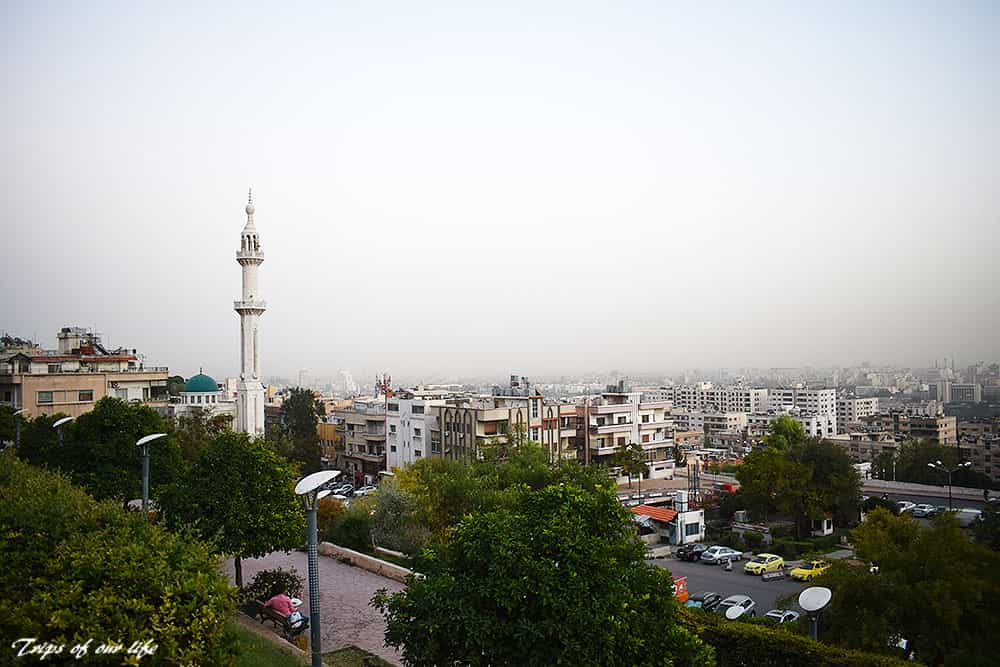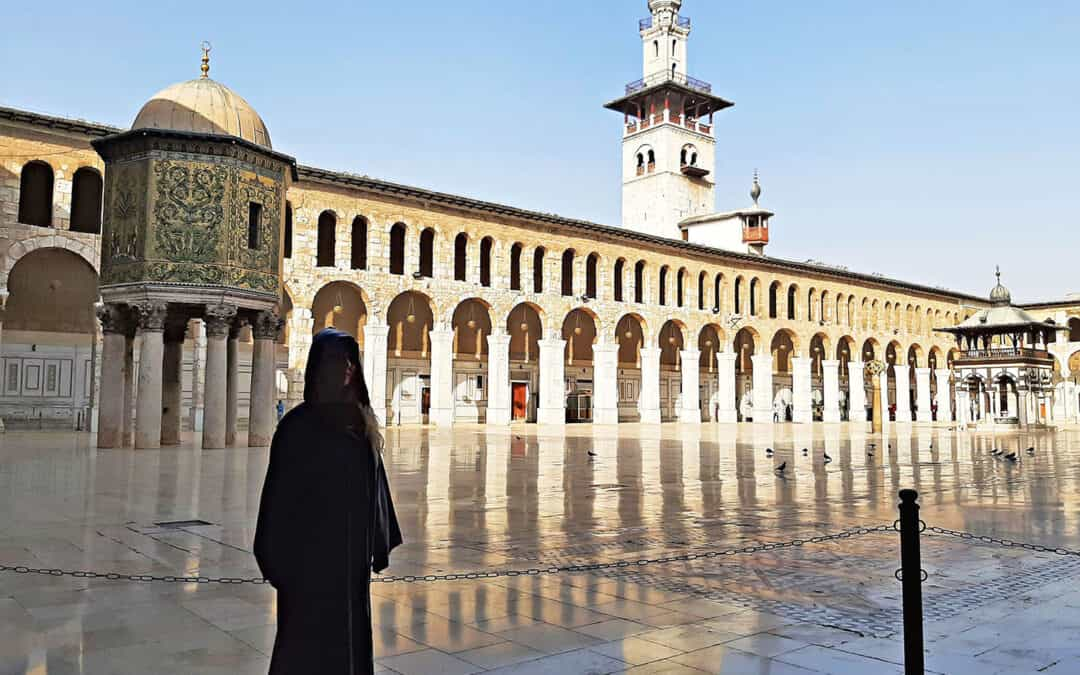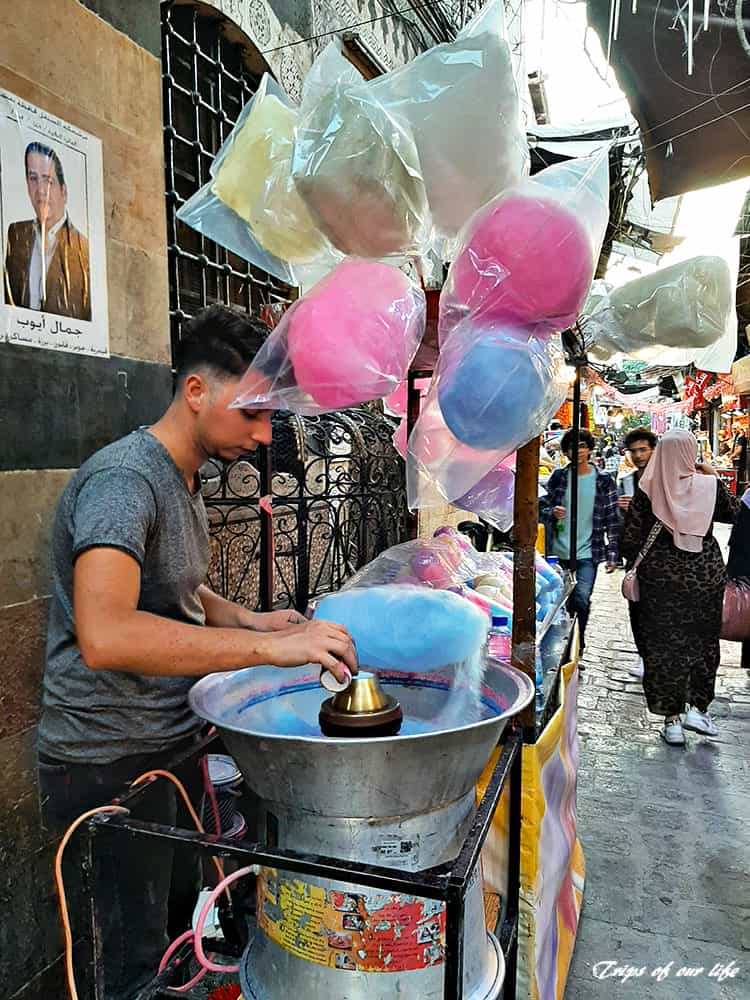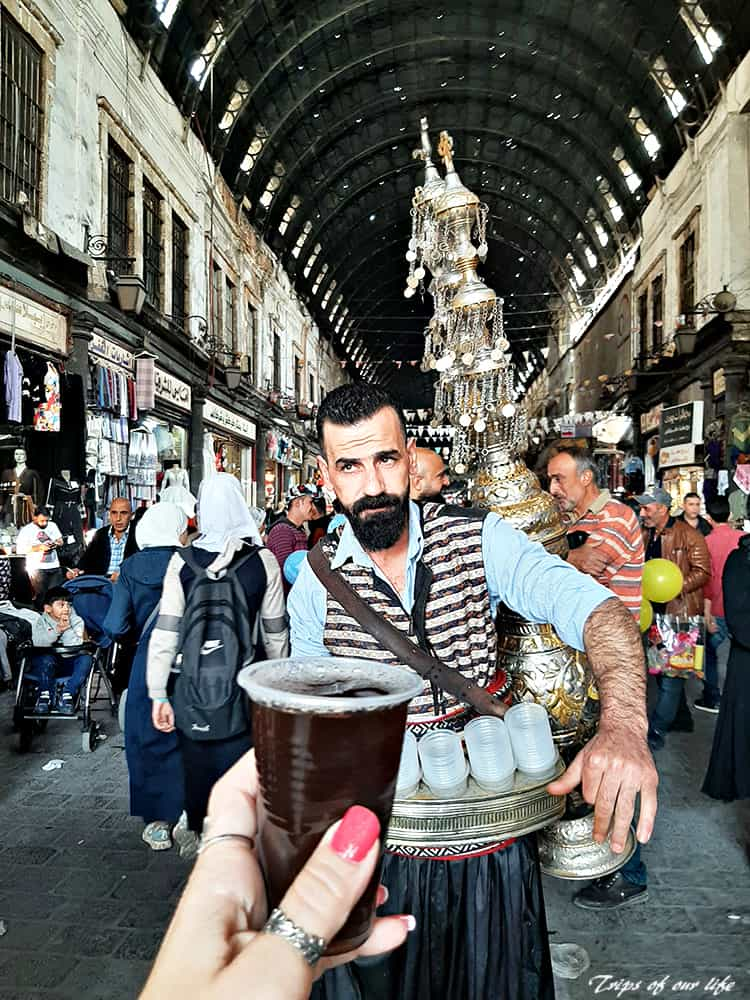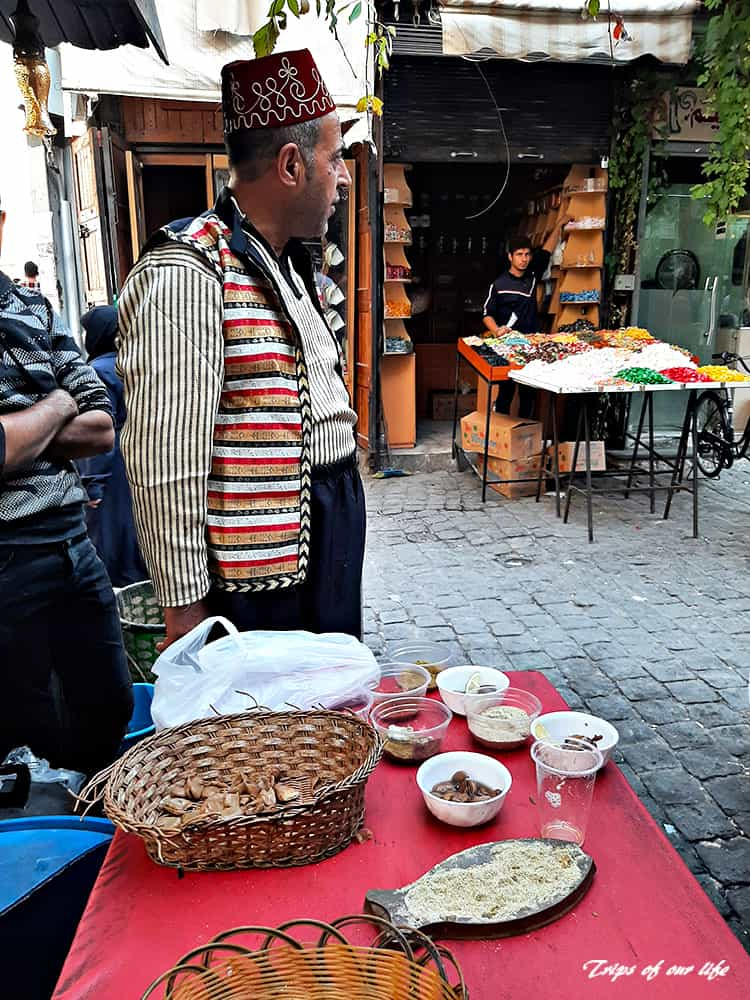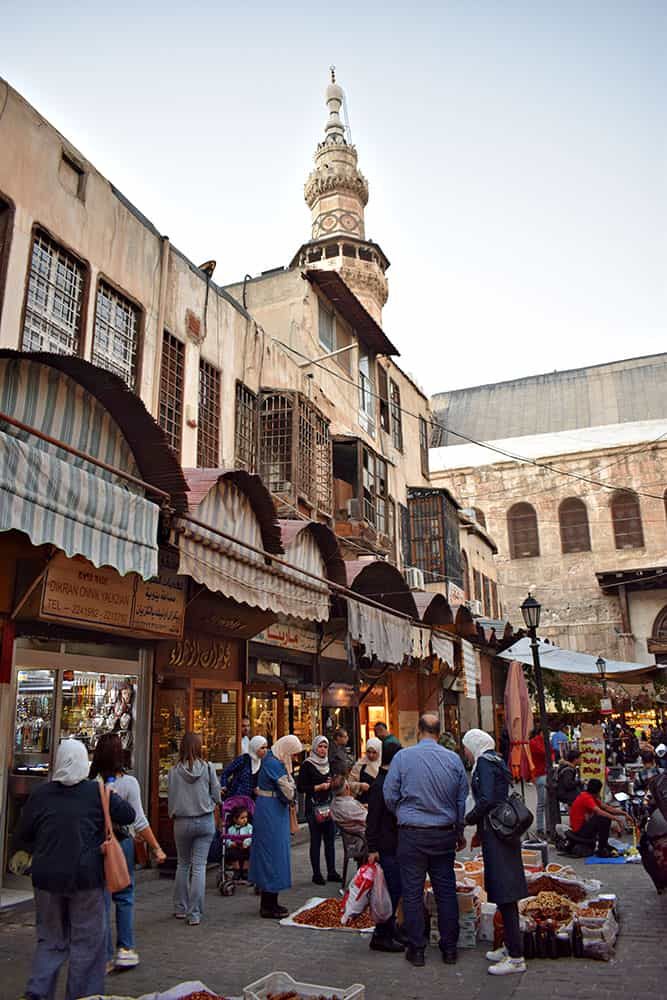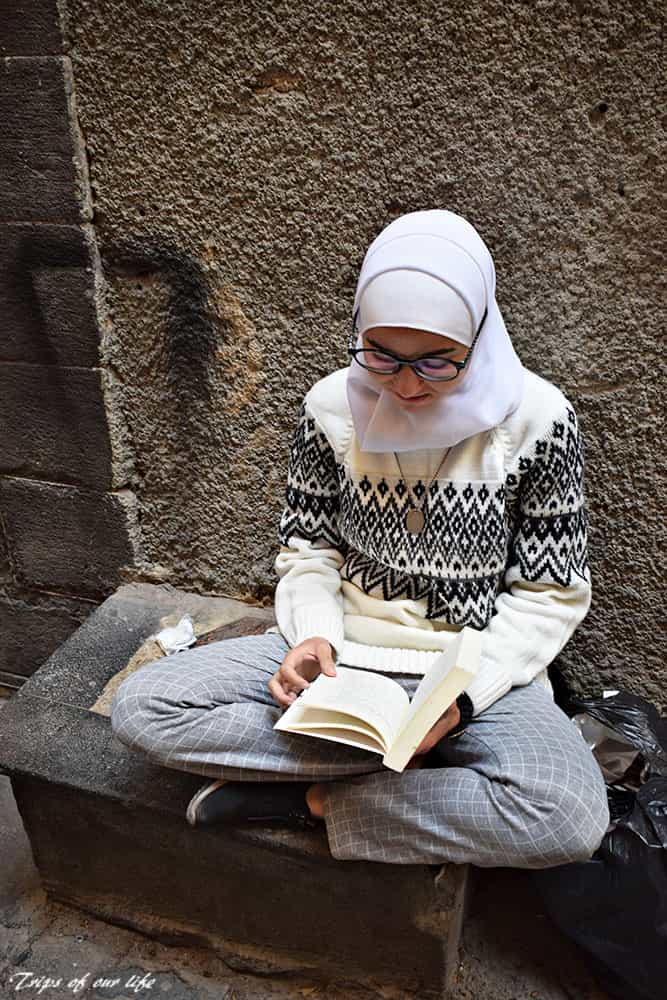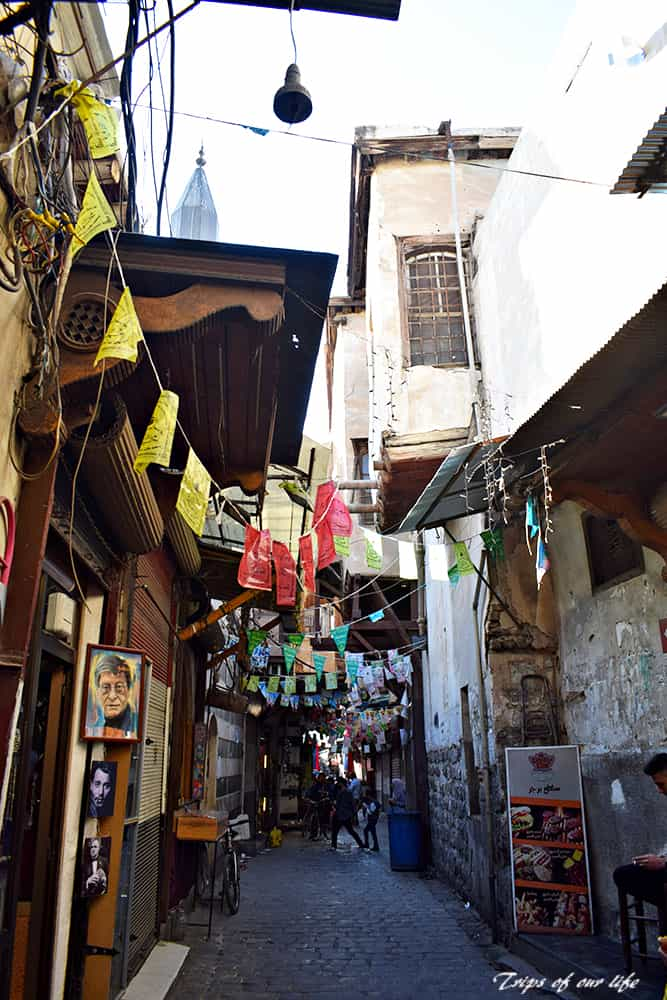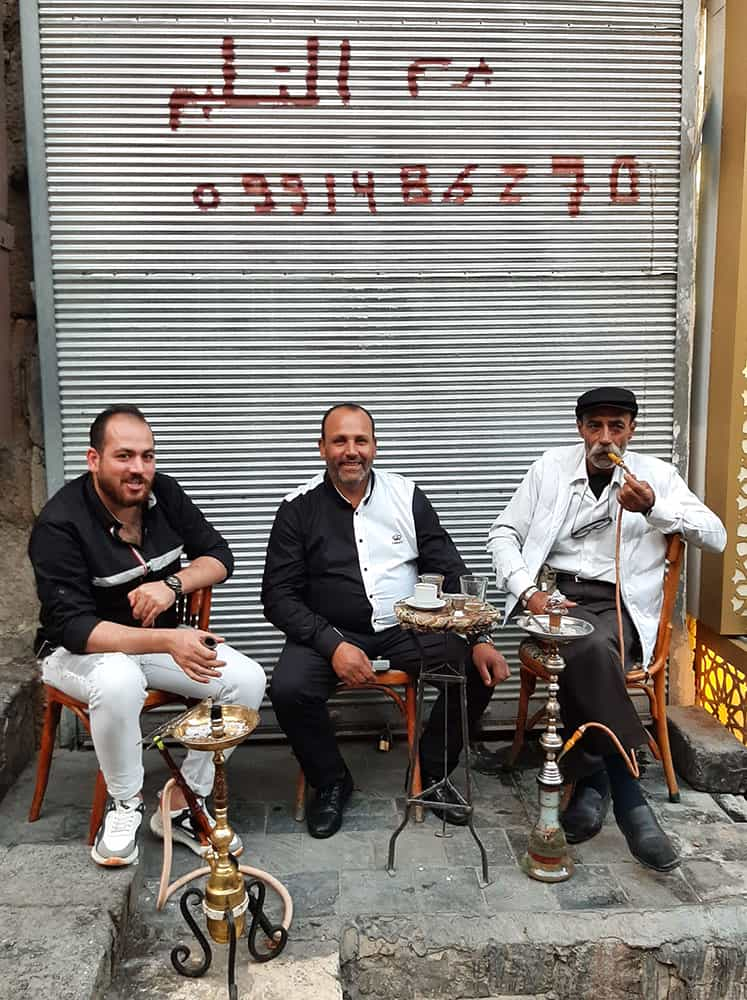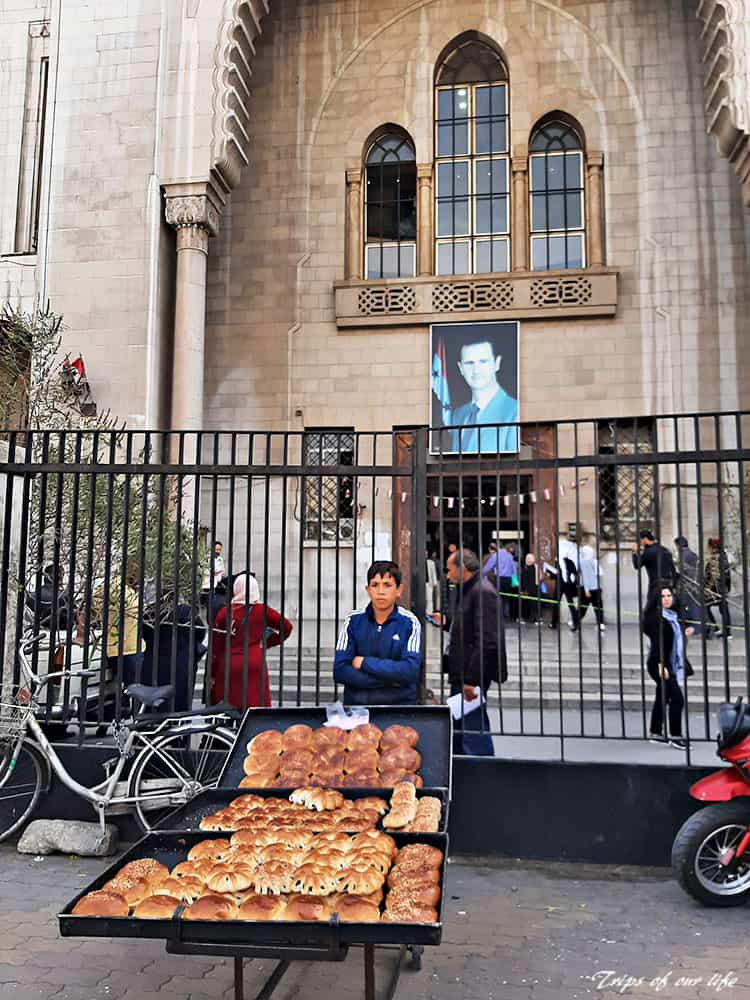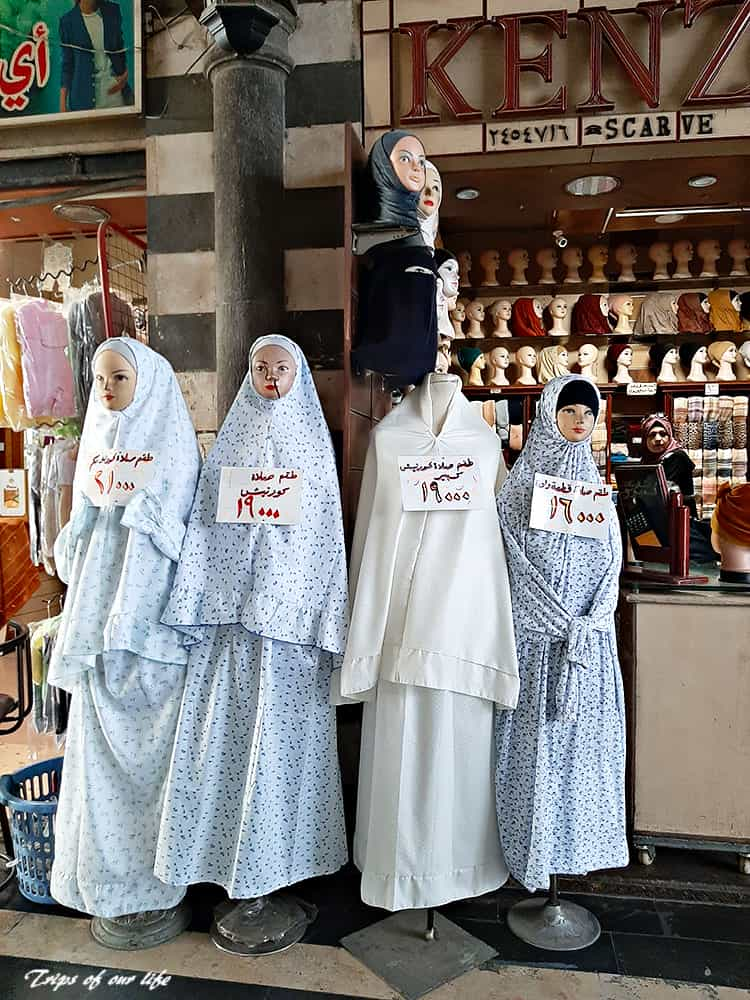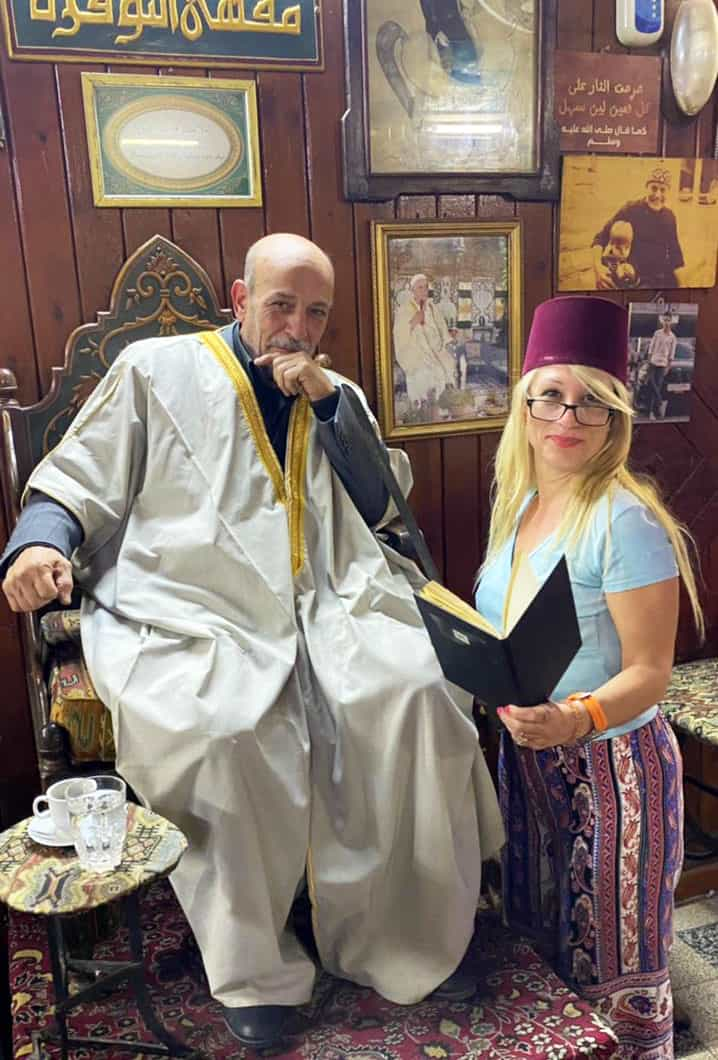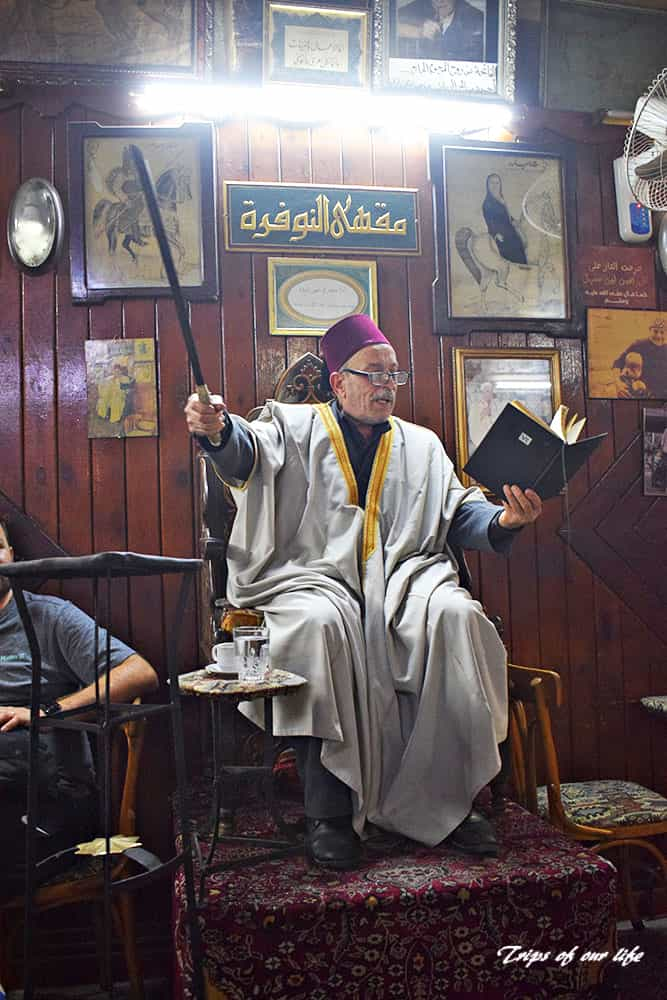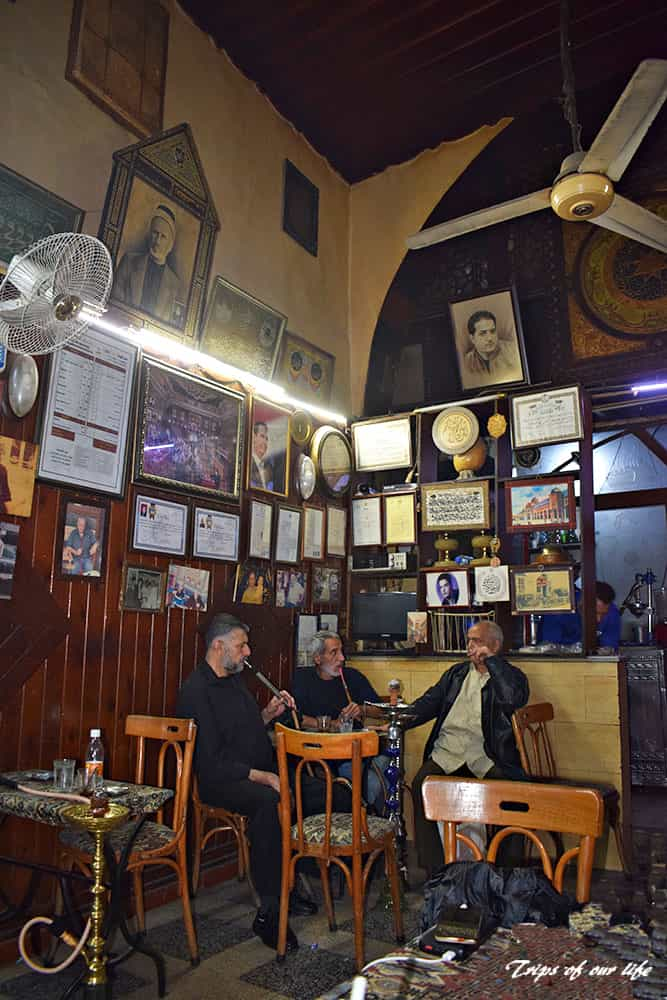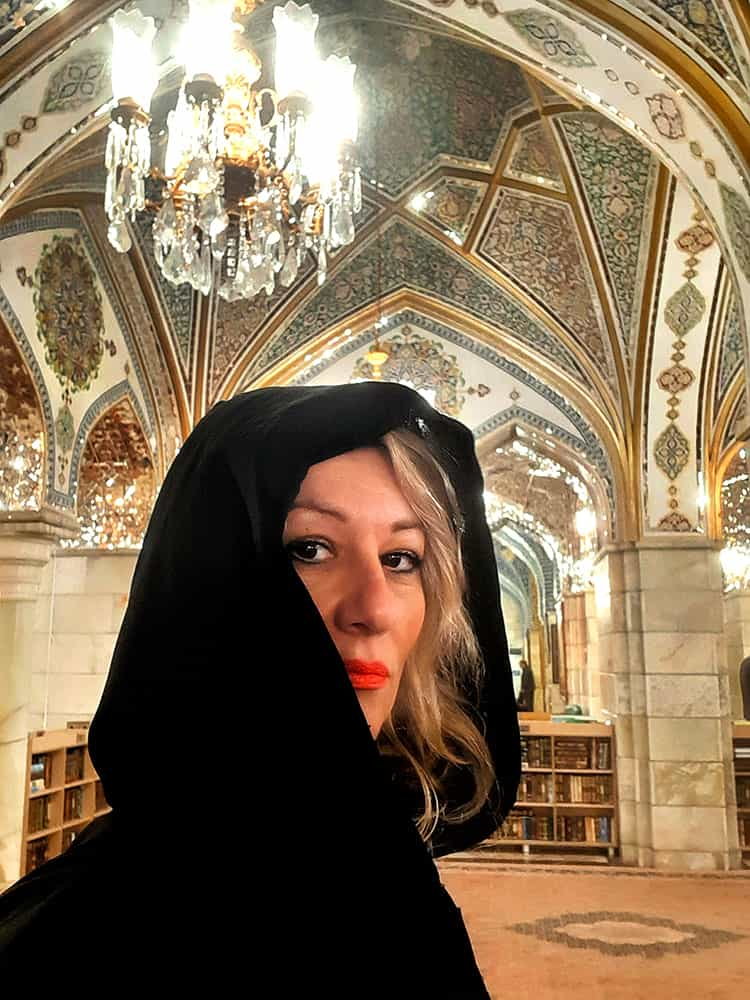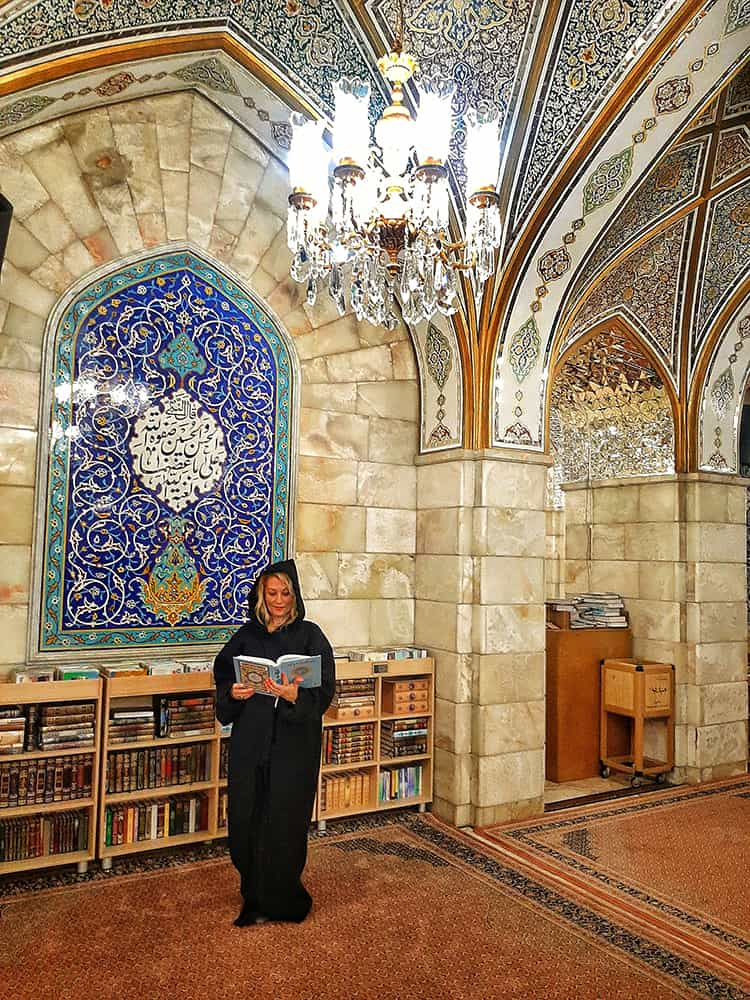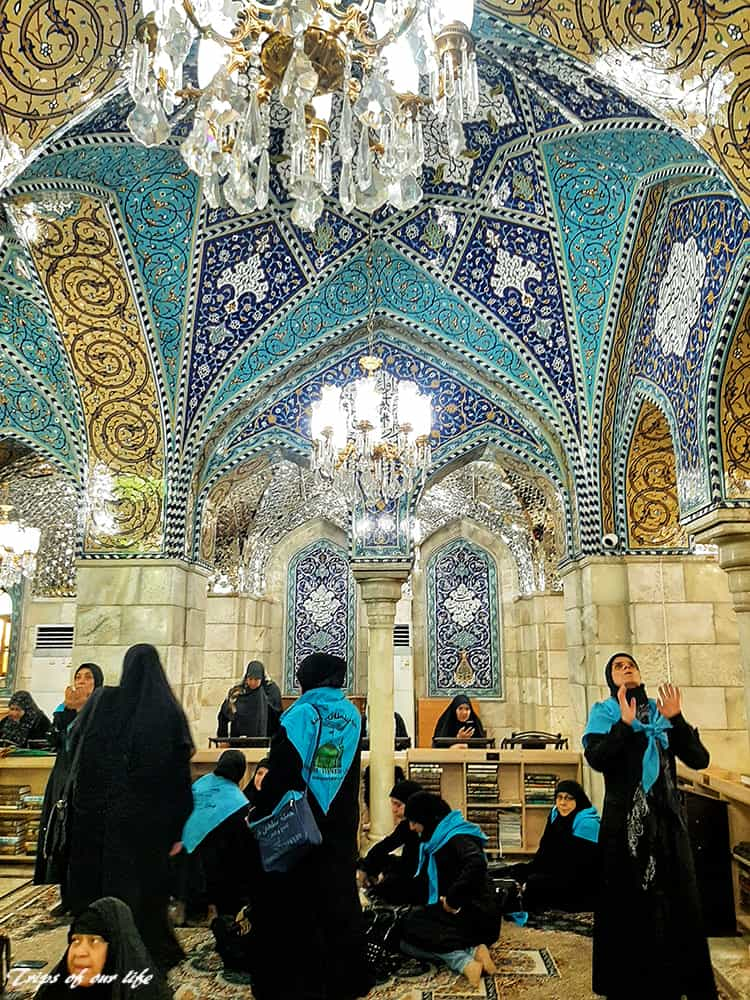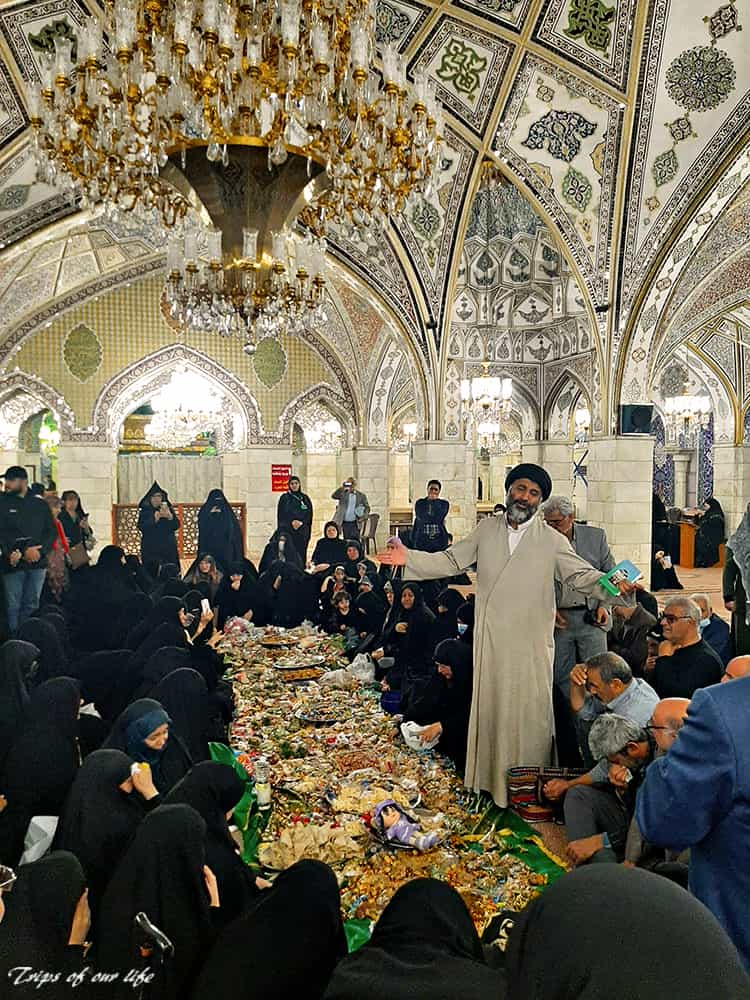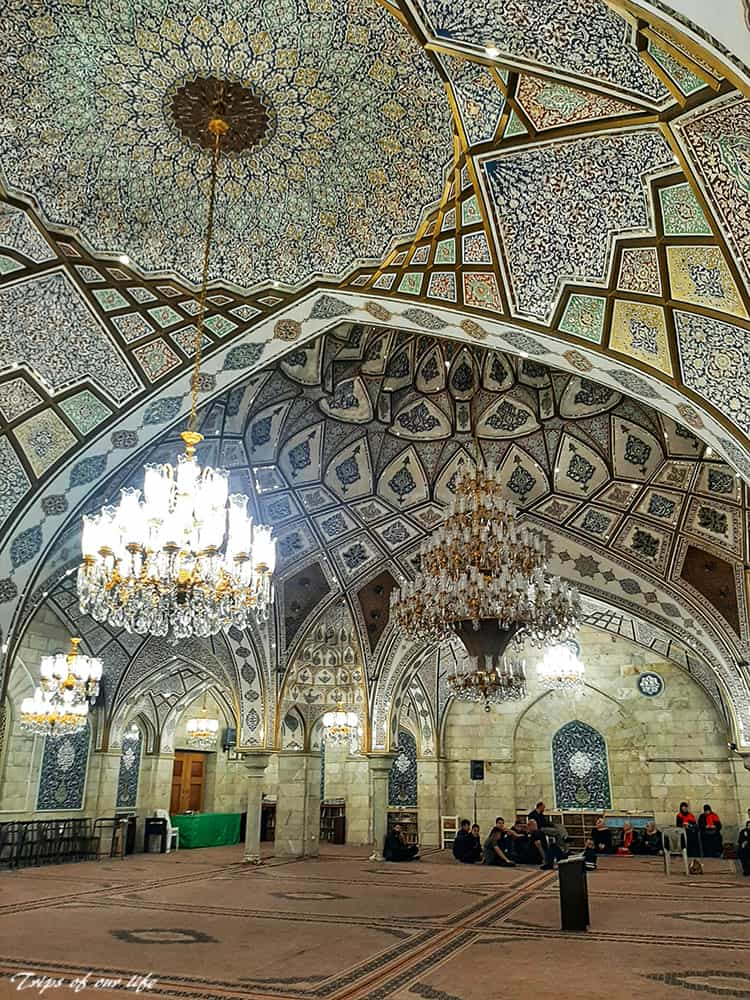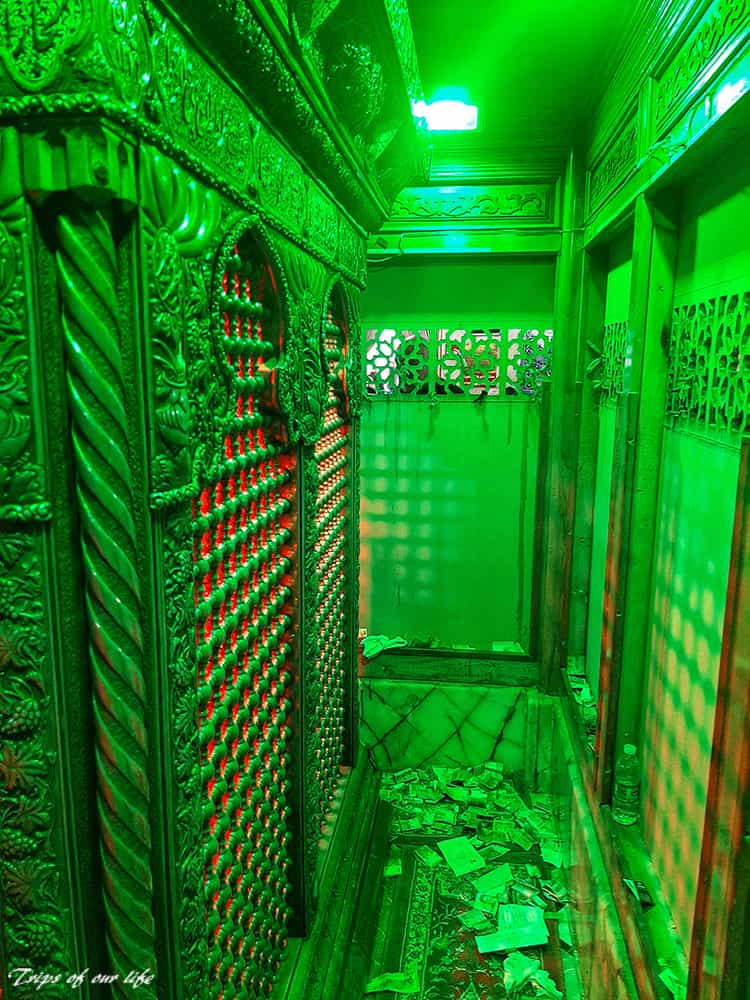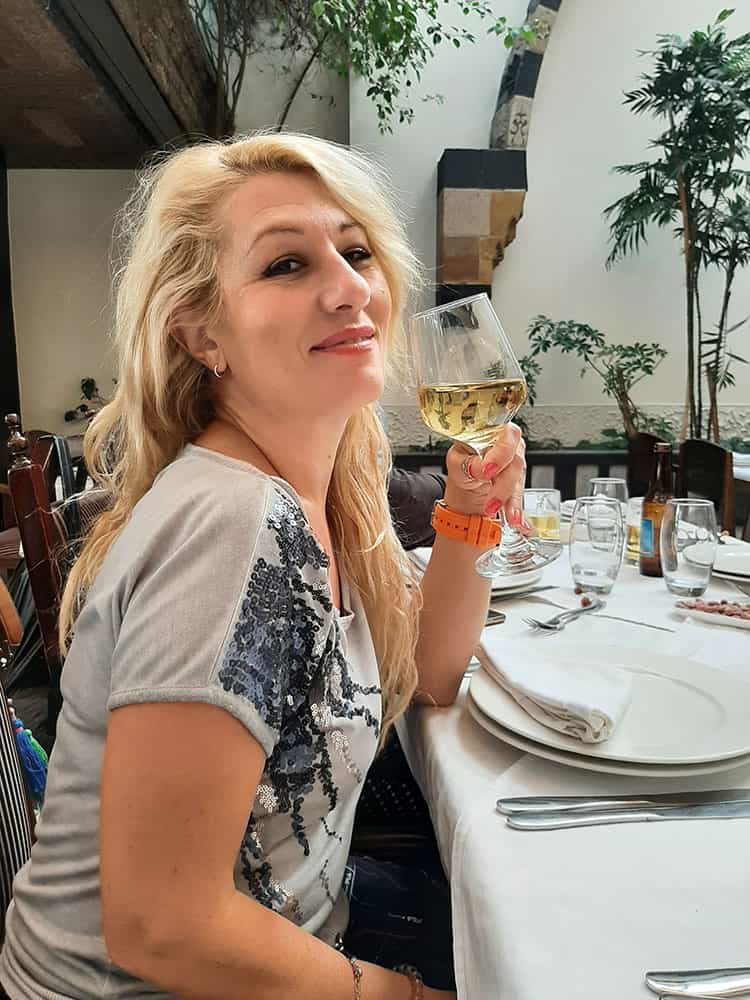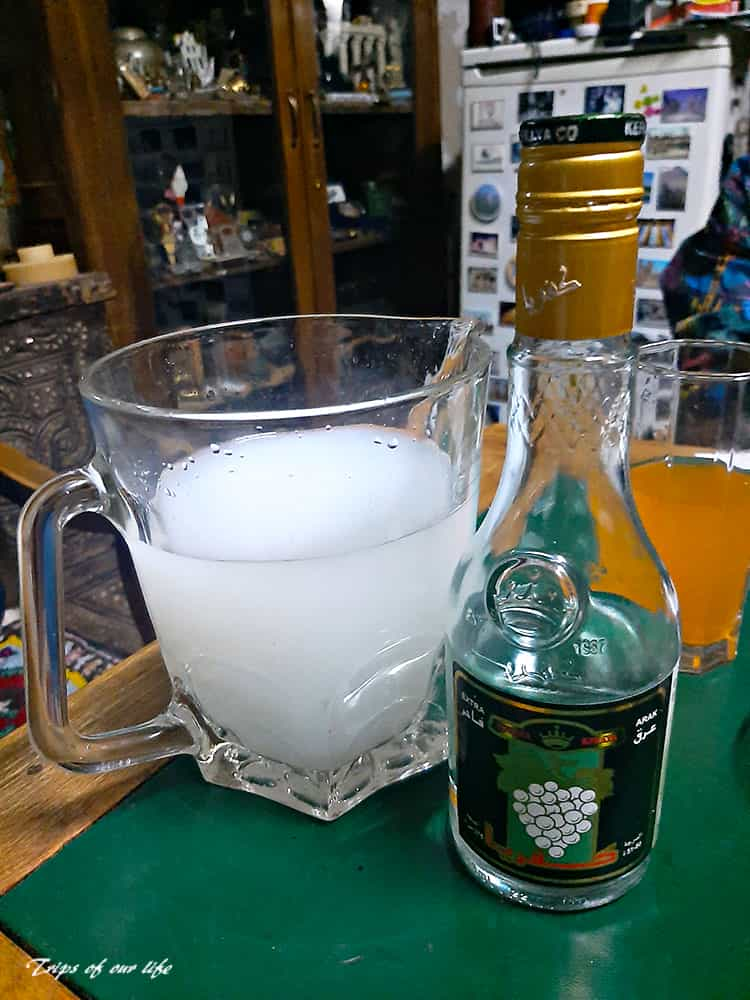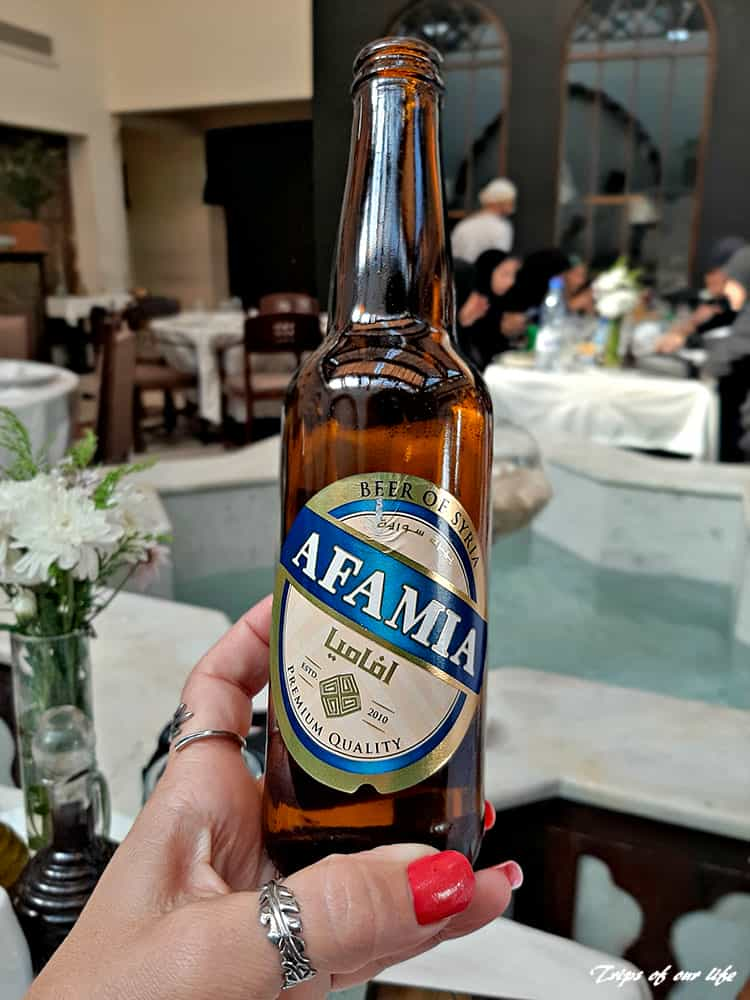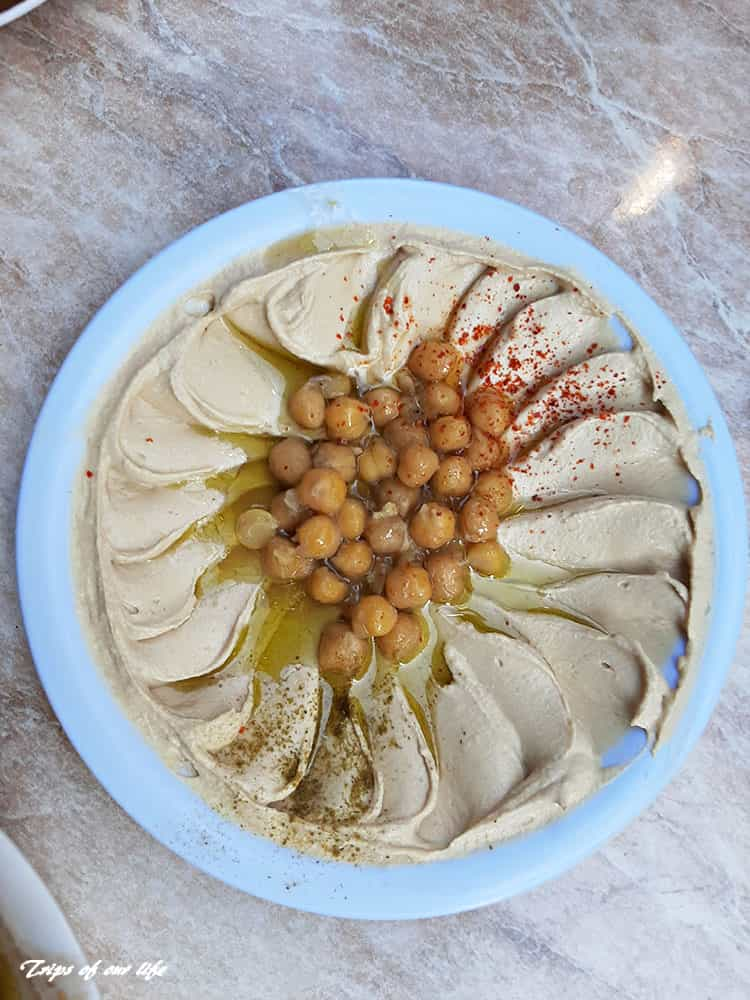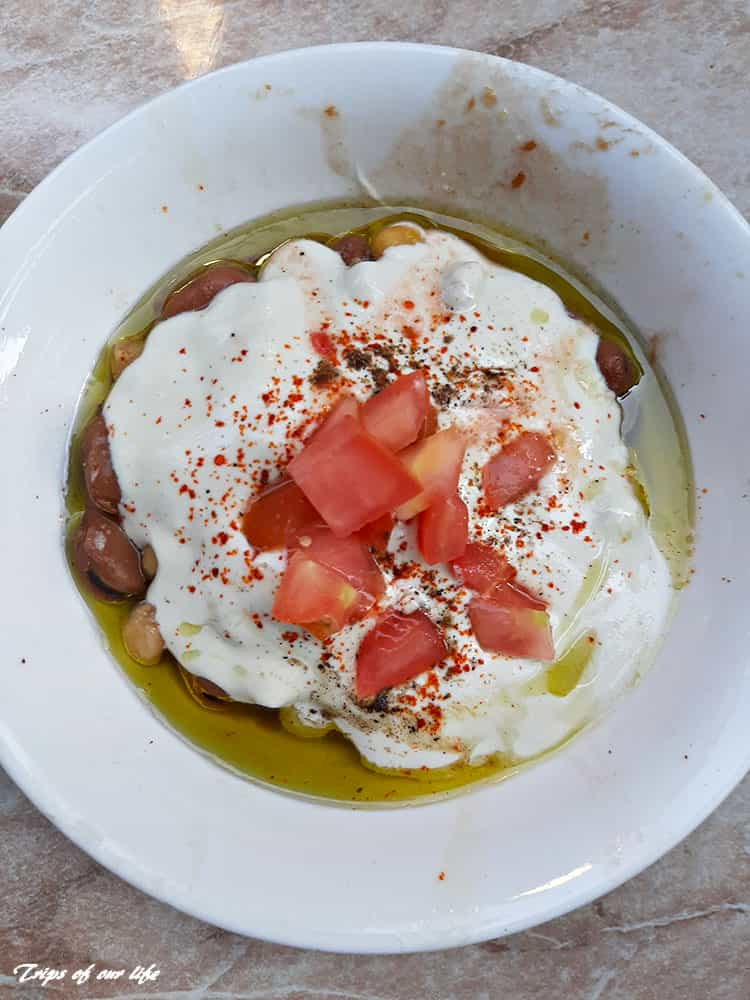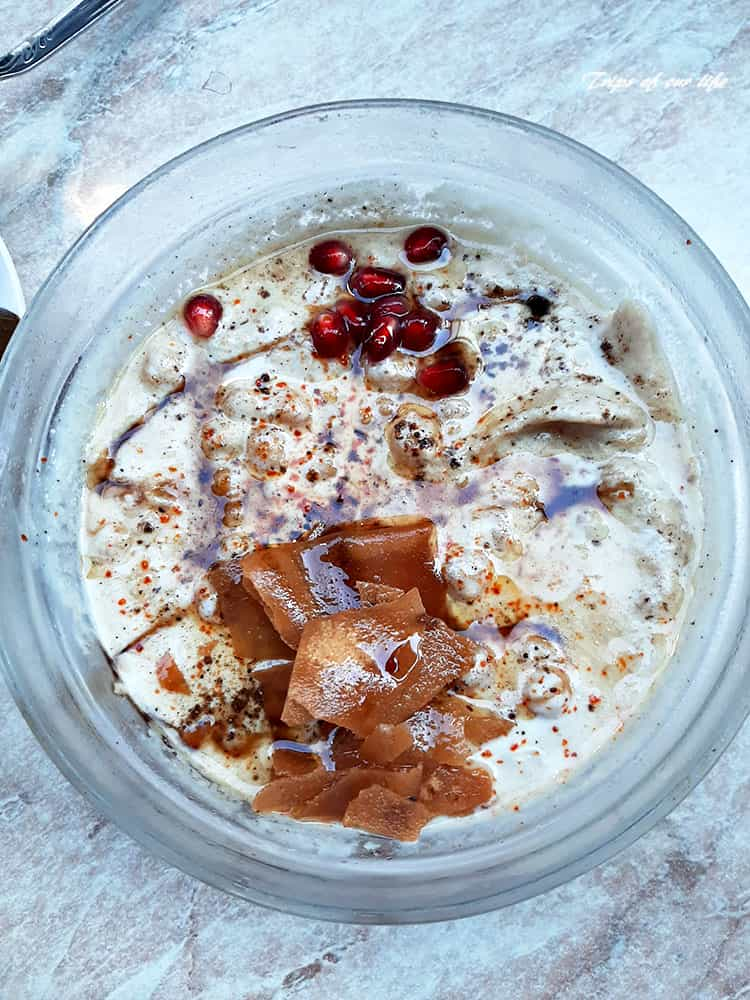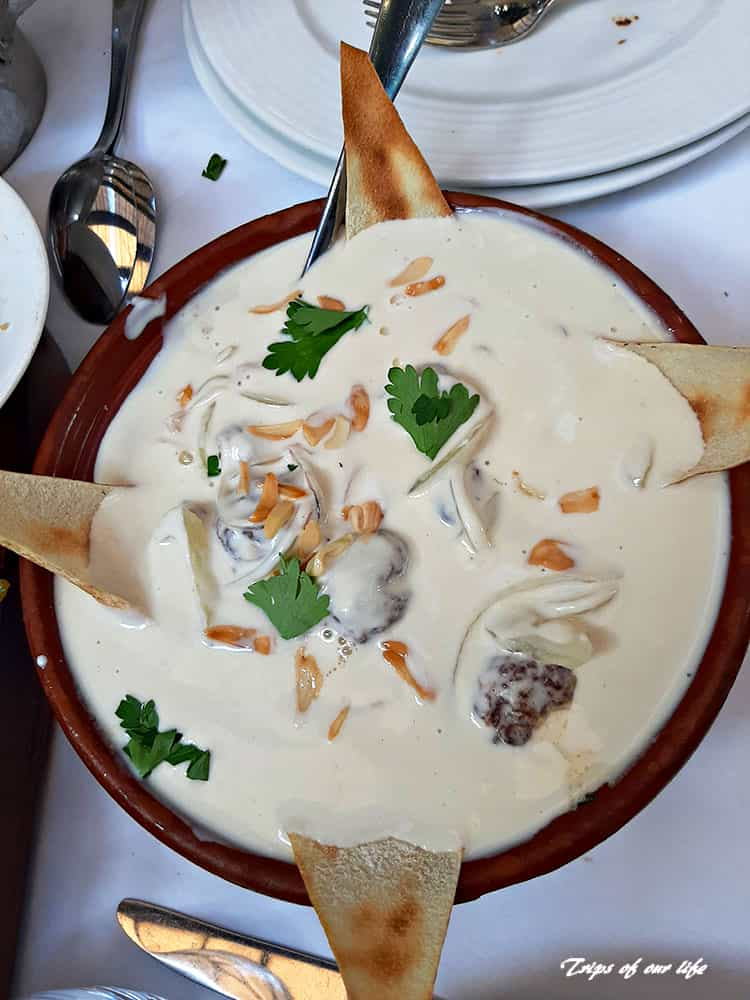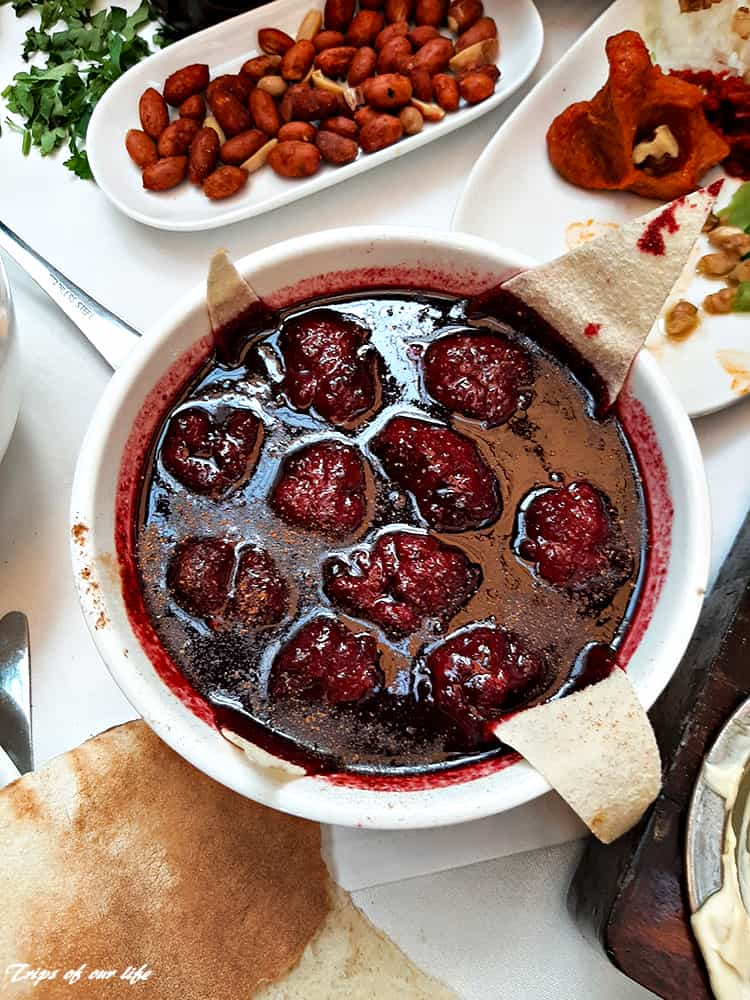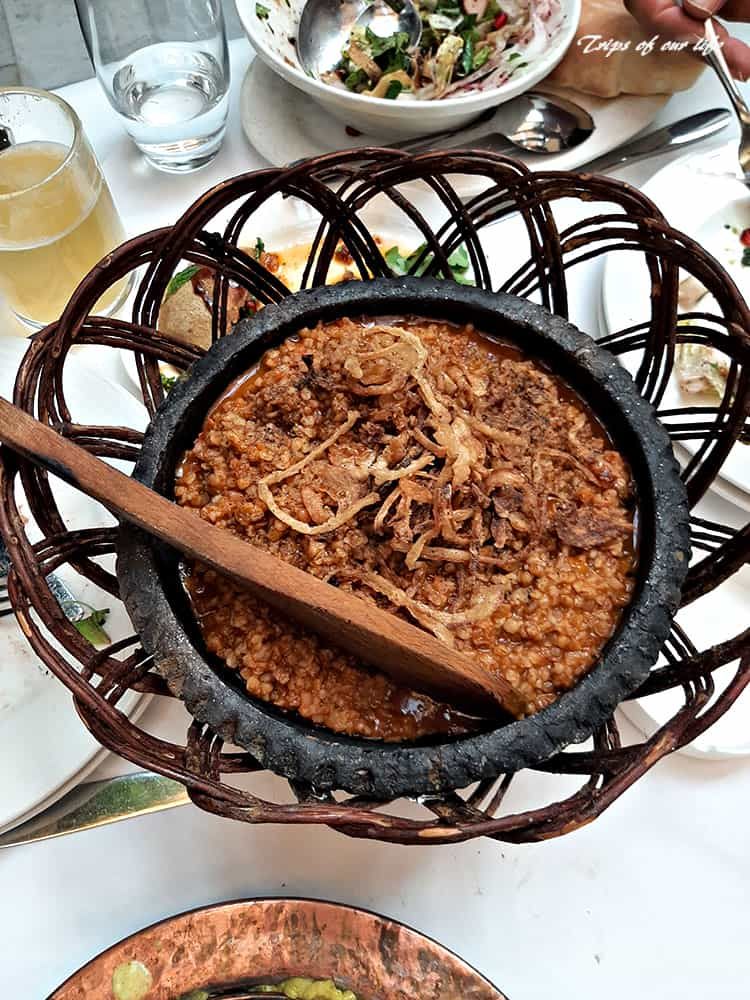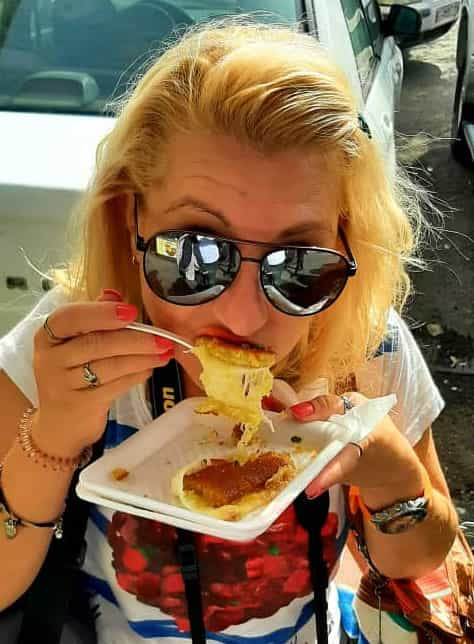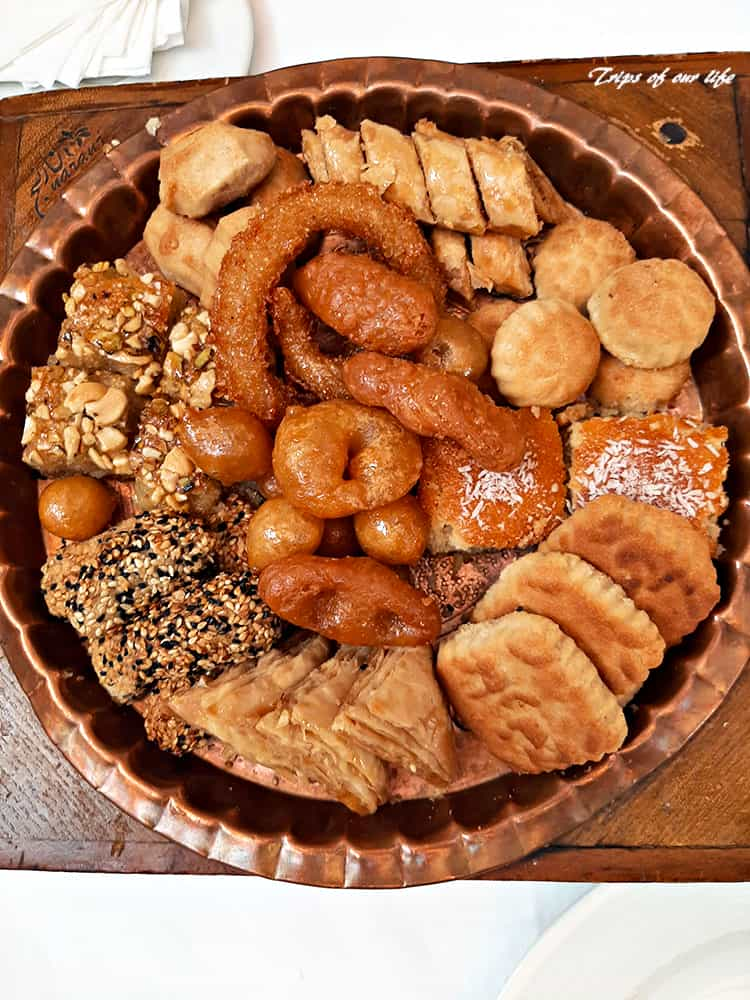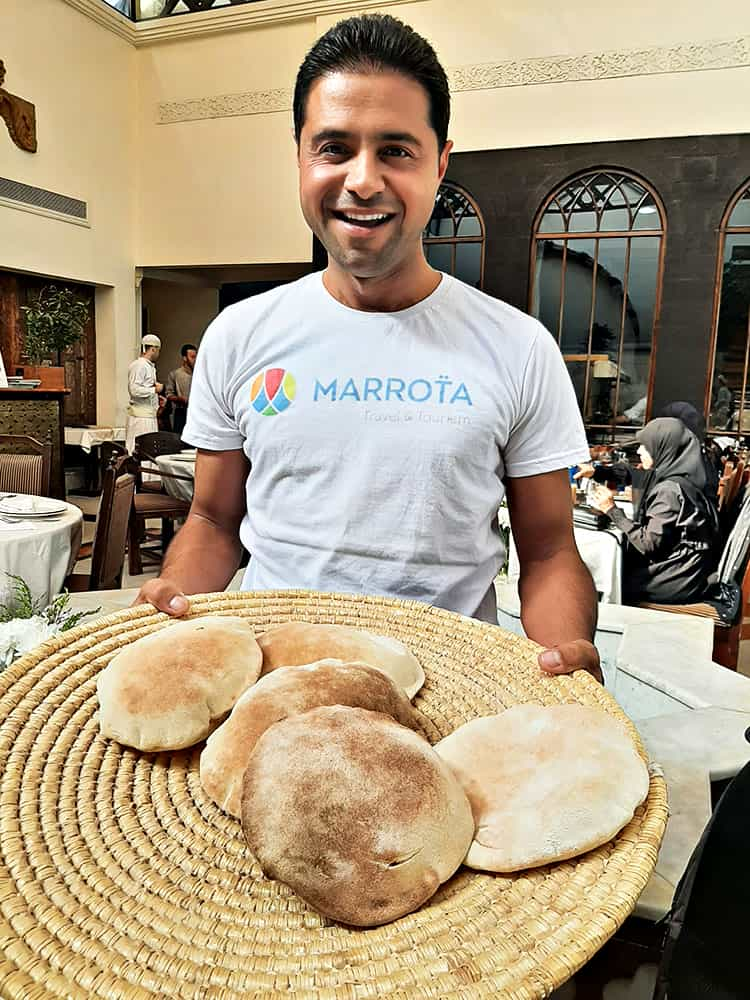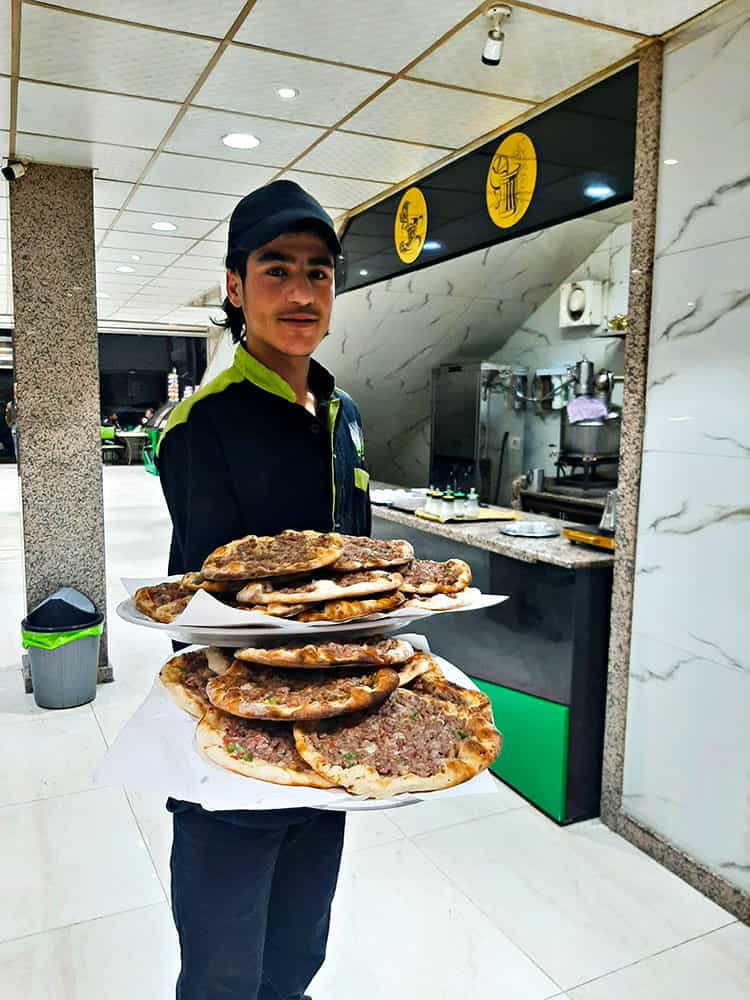We started exploring the Old City, from the first moment we arrived in Damascus directly from Beirut airport.
In Syria, just like in Lebanon, there is a major electricity issue (among other ones), causing numerous blackouts, especially during the nighttime. That’s the main reason, why the local travel agencies choose to use 4 & 5* hotels, as they use generators. In the capital, most of those located inside the old city, used to be palaces, the well-known Damascene mansions, with their unique architecture (having Arabic details in decoration and interior yards with small fountains), which were turned into luxury hotels.
One of them was our 5* hotel Dar Al Yasmin, a mansion straight out of the fairy tale 1000 and 1 nights!!!
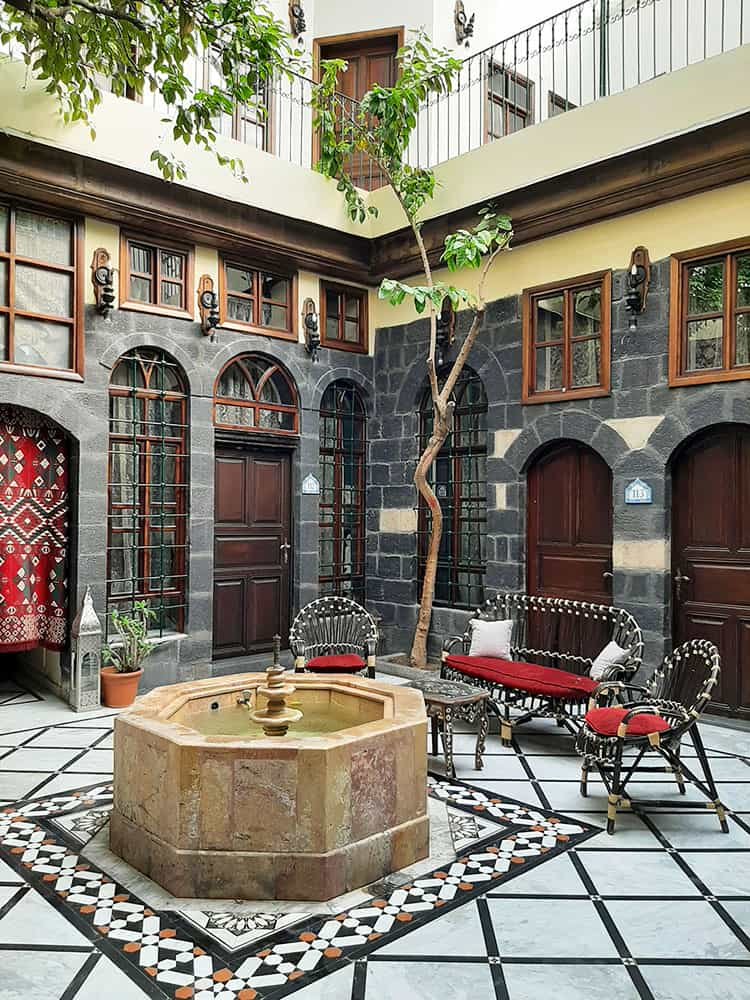

Damascus has never been conquered by either the rebels or the jihadists, and it’s one of the few towns in the country left untouched by the war. The government’s army was strong enough to keep enemies out of the old city as well as the new city, and demolished buildings can only be seen in the suburbs.
Nevertheless, even during a short walk around the oldest inhabited capital of the world, you face the decay, the ruined houses, the abandoned streets and the destruction left behind by the civil war and the economic crisis, that still afflict this amazing nation to this day. And I am focusing on the nation, because although I wasn’t that excited about the country, I simply fell in love with the Syrian people, from the very first moment I set foot in the streets of Damascus!
While traveling independently within the country is forbidden, walking around the cities without an escort or guide is totally allowed. And so we did. As long as we were waiting for our guide, we decided to explore our neighborhood and have breakfast. However, we hadn’t exchanged money yet and we had no idea that using any other currency but the local Syrian pound was illegal. So here we go, 5 women asking all over for food, without even being able to communicate, since no one spoke English. Apparently, we were looking very hungry and desperate, so Allah fell sorry for us….
In the end it was not Allah, but the baker who had already refused to be paid in a foreign currency and to our great surprise, he offered us pies for free! All he asked for was selfies!!! (obviously, we paid him back when we exchanged money later).
The next big surprise was a gentleman we met by chance on the street, during my attempt to speak Arabic with the locals. While chatting and making fun of our encounter, we realized that the stranger was a well-known tour guide and professor of our own tour guide Rami (Marrota travel). Mr. Abdull was so happy to meet us, he invited us over for dinner! Our unpredictable visit to the courtyard of his house that night was fully educational and incredibly entertaining, confirming once again the unfailing hospitality of the locals.
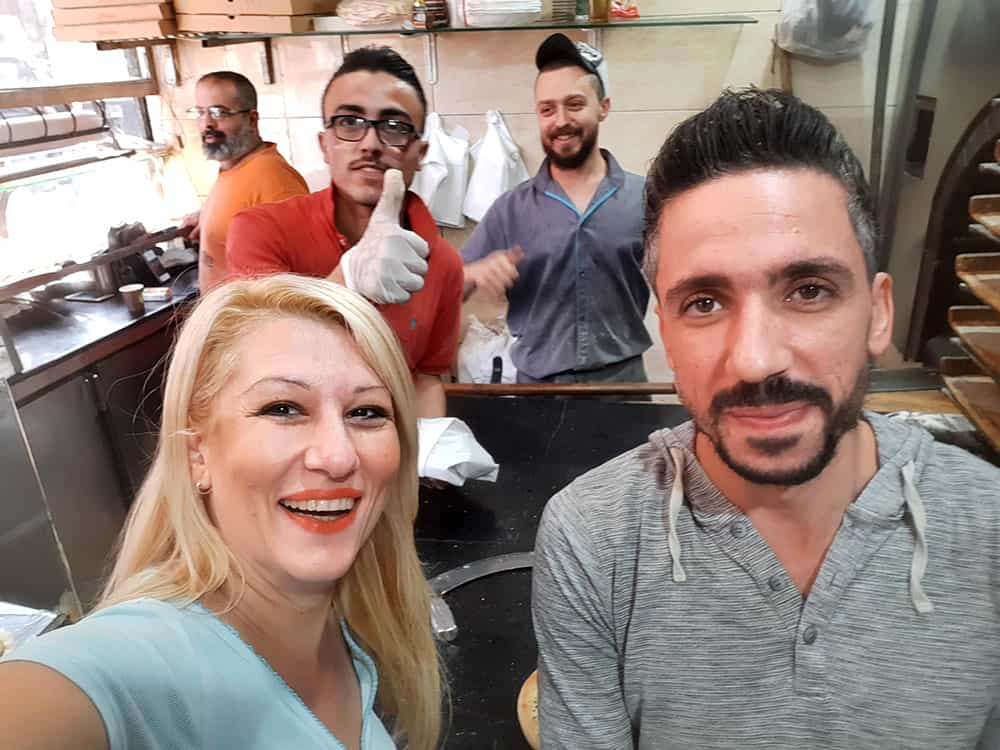
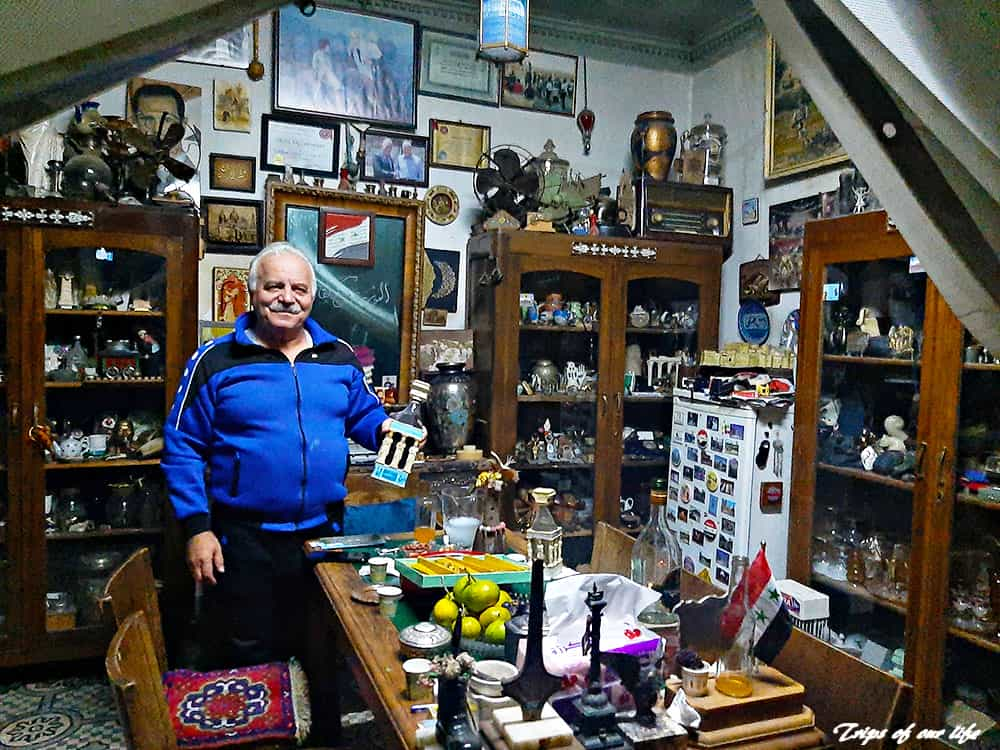
In Syria, the religions of Islam and Christianity coexist harmoniously.
The locals (most of them Muslims and Orthodox Christians) live together with no issues and women are free to dress according to their religious beliefs. So, walking through the streets, especially in the capital, you can meet women with hijabs, headscarves and torn jeans, while on the same street you can see Orthodox churches right next to mosques!
Our tour of Damascus included visits to the most important monuments, but also endless walks in the maze-like alleys of the old city and the largest souq (Arabic bazaar).
We visited several Christian Orthodox churches, a few old mansions, the Straight (commercial) Street of the old town with the traditional cafes and small shops, the National Museum, a Shia mosque, where we were lucky to experience a purification ritual, and the amazing Umayyad Mosque with the impressive yard, and the mausoleum of John the Baptist.
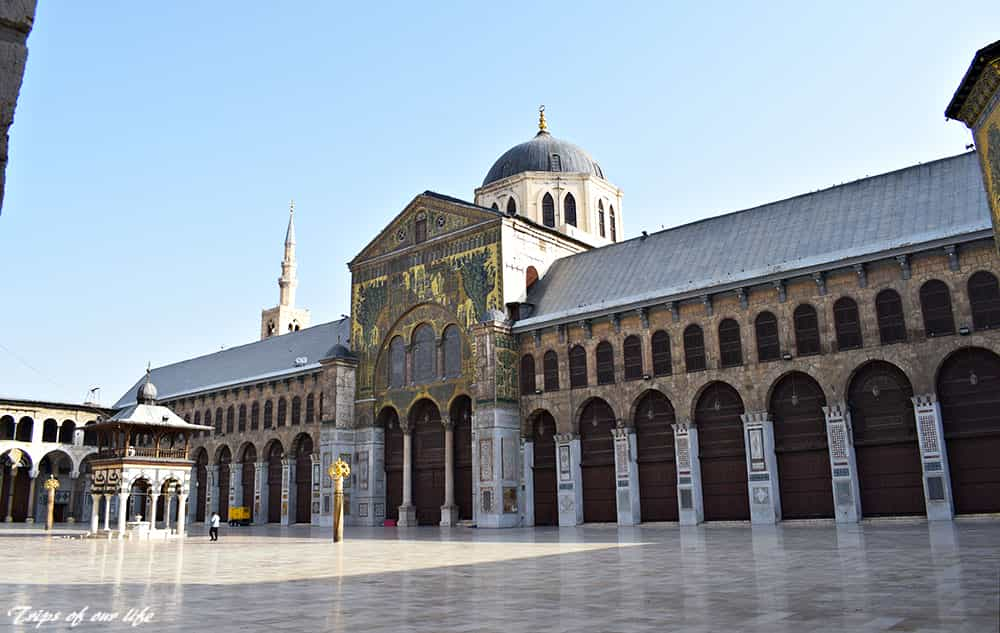
Umayyad mosque
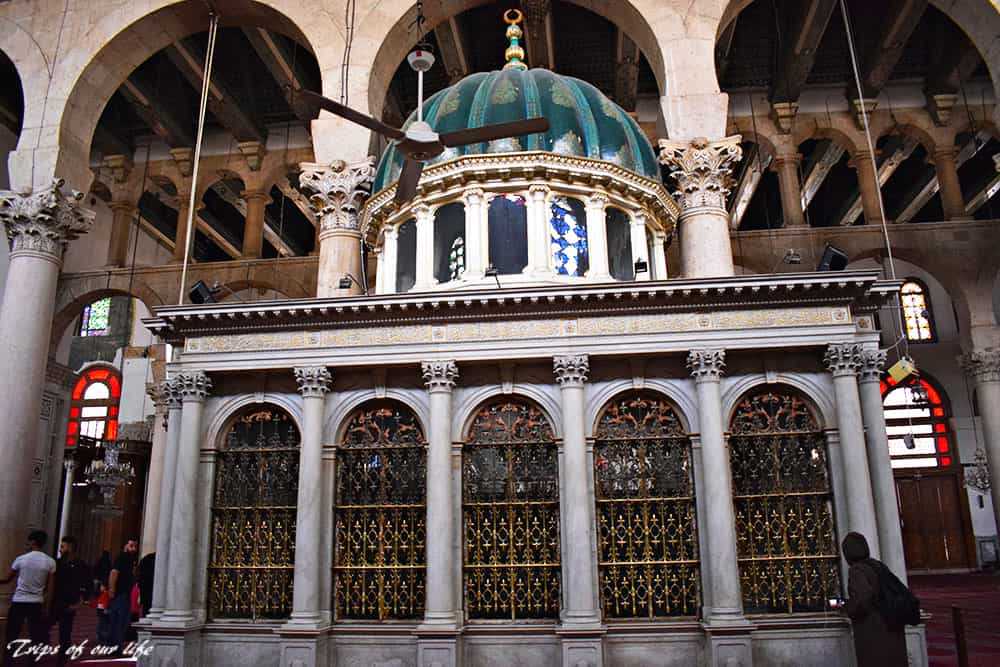
Umayyad mosque – shrine of John the Baptist/ Yahya ibn Zakariya
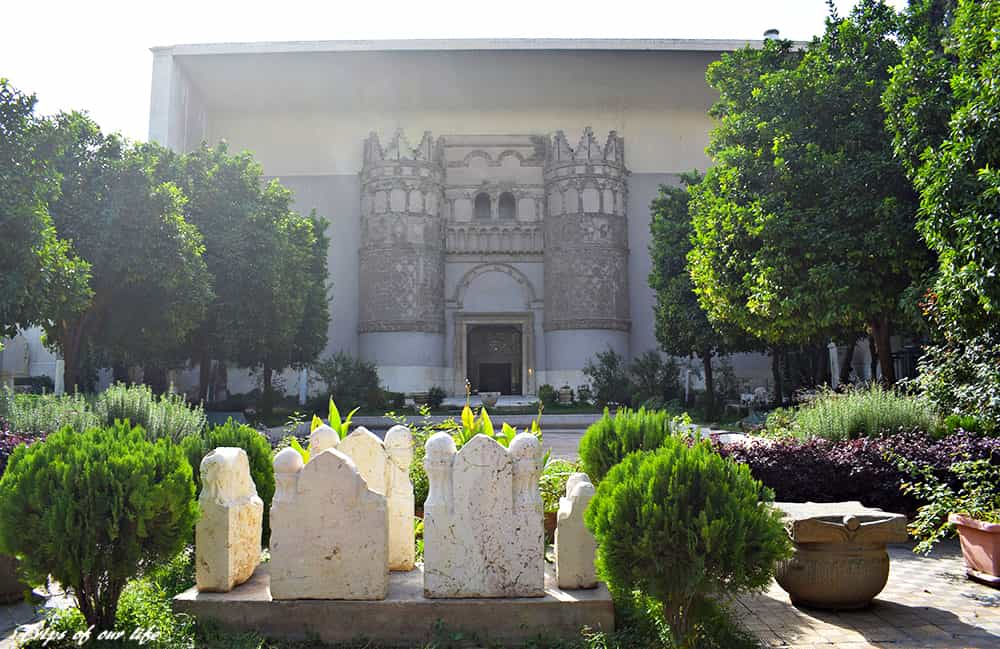
the National Museum
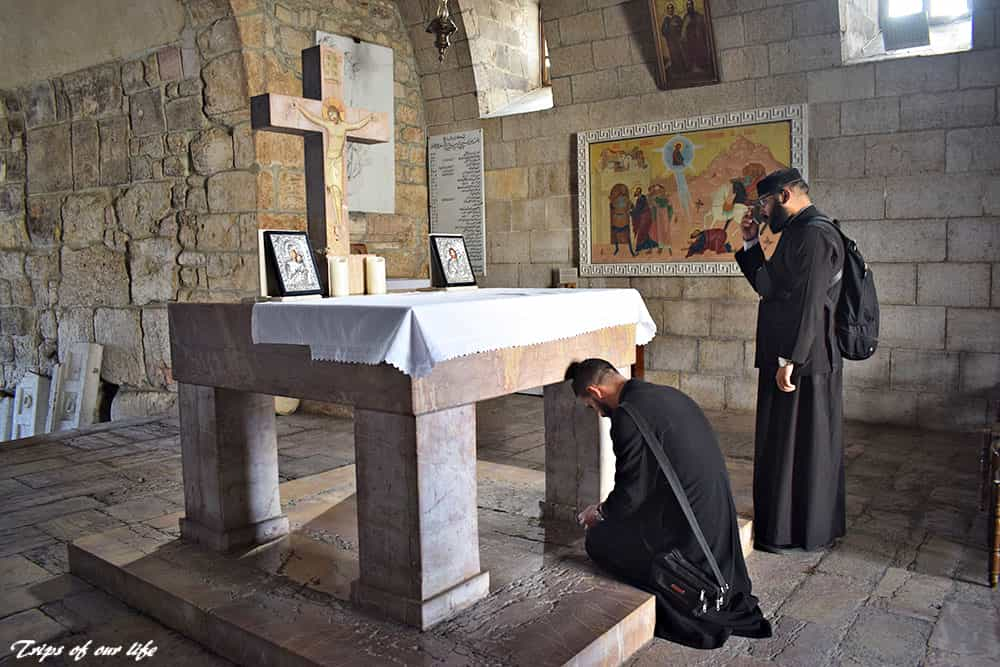
St.Paul’s Christian Orthodox church
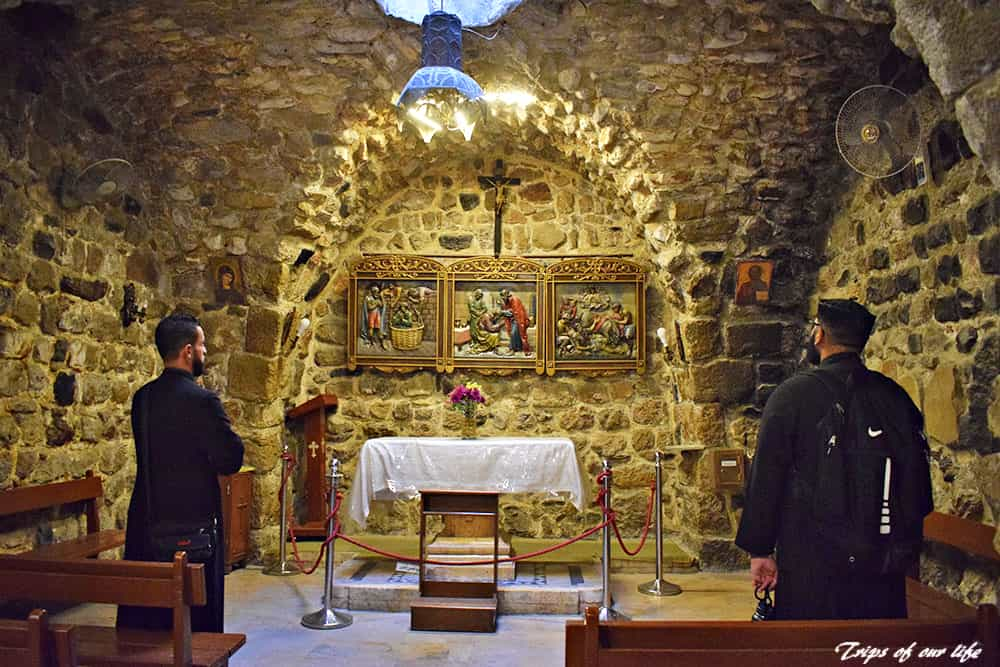
St.Anania’s Christian Orthodox church
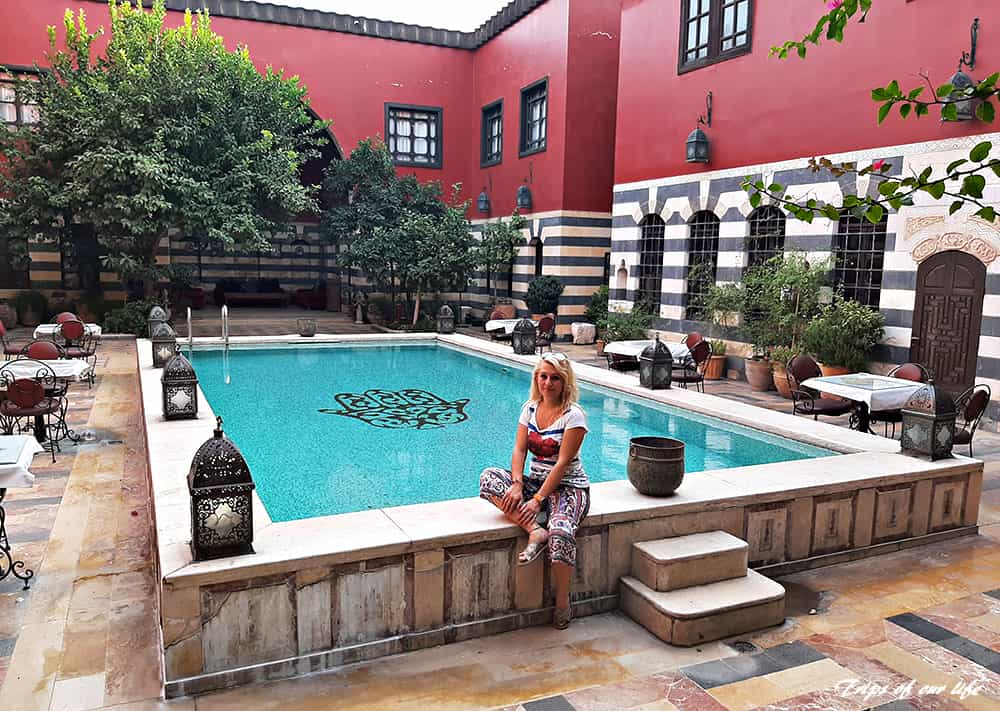
Talisman hotel, Jewish quarter
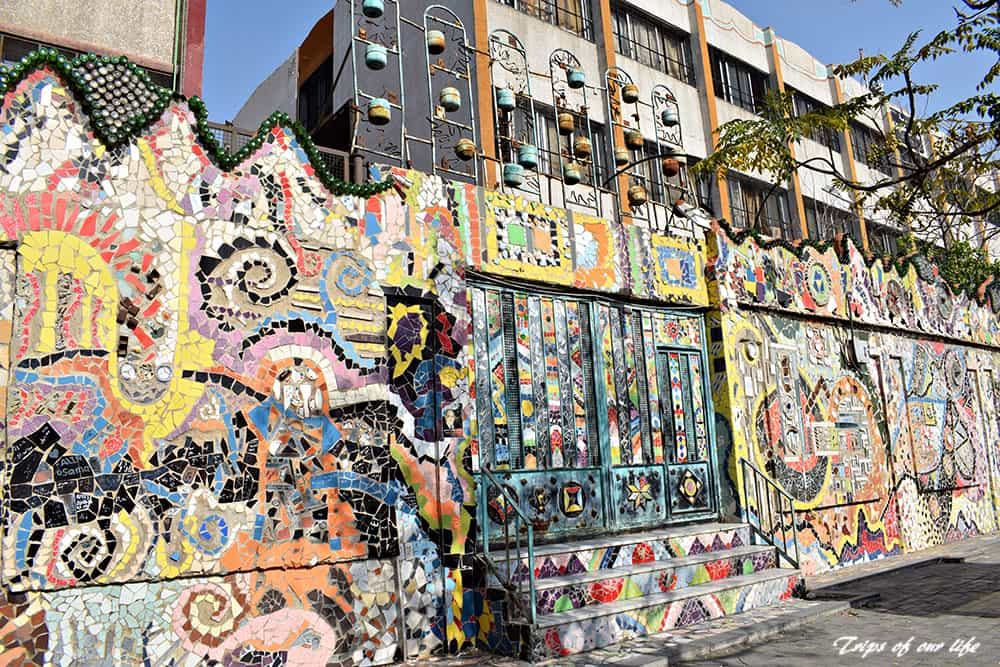
the largest mural made of recycled materials
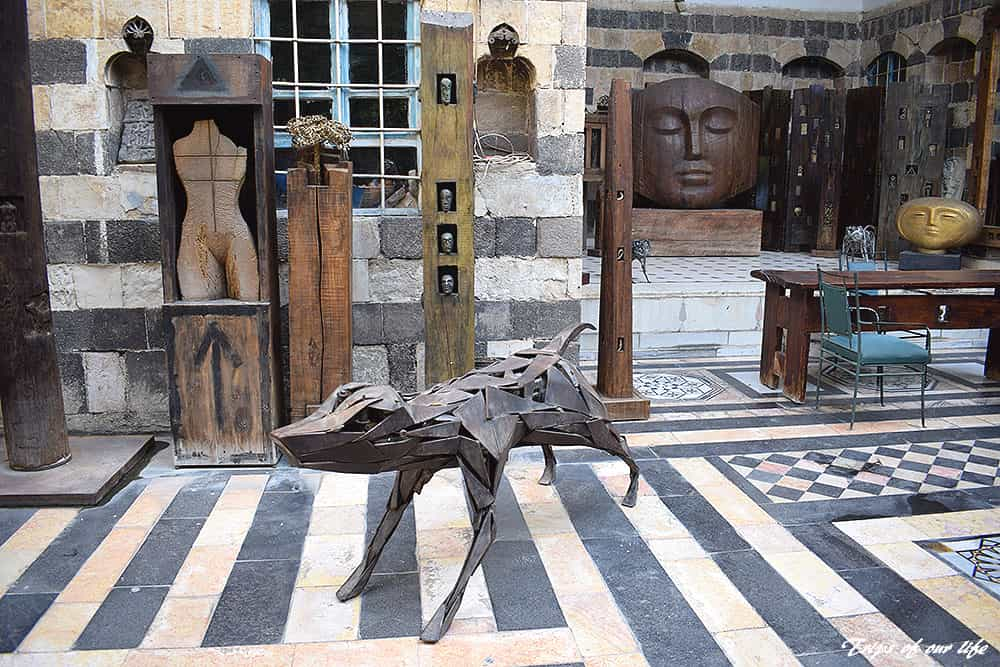
Mustafa Ali Gallery
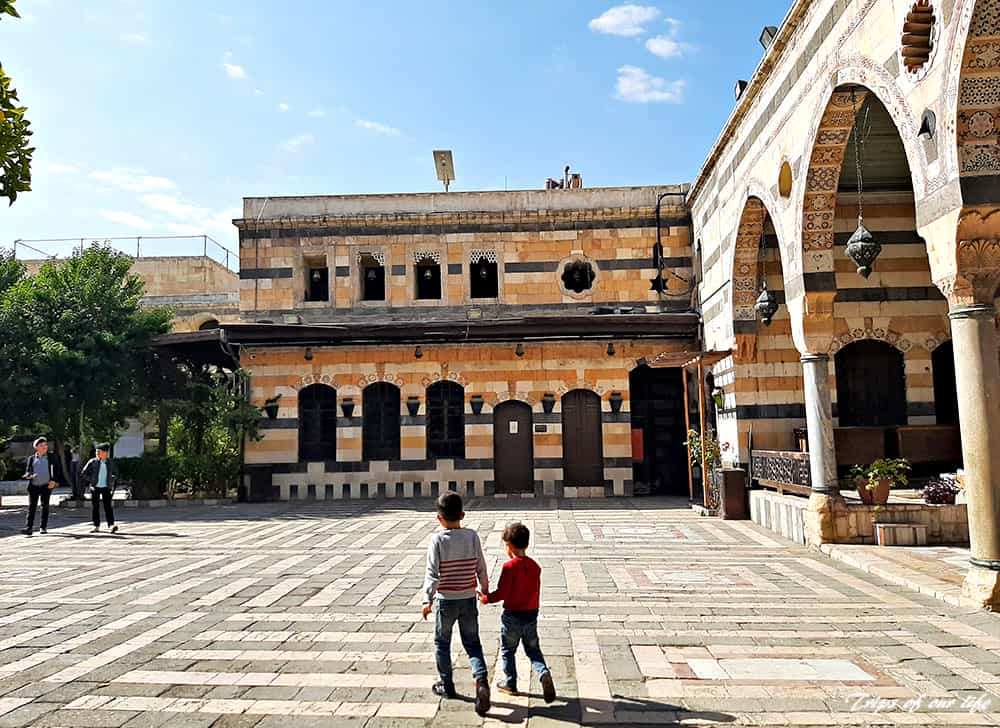
El Azem Palace
Al Hamidiye souq
One of the most interesting parts of this tour was undoubtedly the walk around the largest souq of the city, Al Hamidiye, with its countless alleys and small shops that sell everything you can imagine. However, what I didn’t like in the souqs I visited in Syria was the countless shops of the Chinese products, mainly children’s toys and imitations of clothes, shoes and accessories. The truth is that I had never seen so many fake Chinese products in a souq before! Despite this, the souq was the usual crowded bazaar with spices, street vendors, the hustle and bustle, and all the great stuff you can find in the respective Arabic markets around the planet.
What makes Al-Hamidiye special though, is the famous traditional Bakdash ice cream, where you have to deal with the long queues of the locals, to enjoy it. Although it wasn’t as sweet and tasty as I expected, the quantity was enormous for just one person! Additionally, the way they serve it, is very unique: they throw a large ball of ice-cream into a basin with pistachios, then they put it in the cup and add a large portion of thick cream on top.
The result is really impressive!
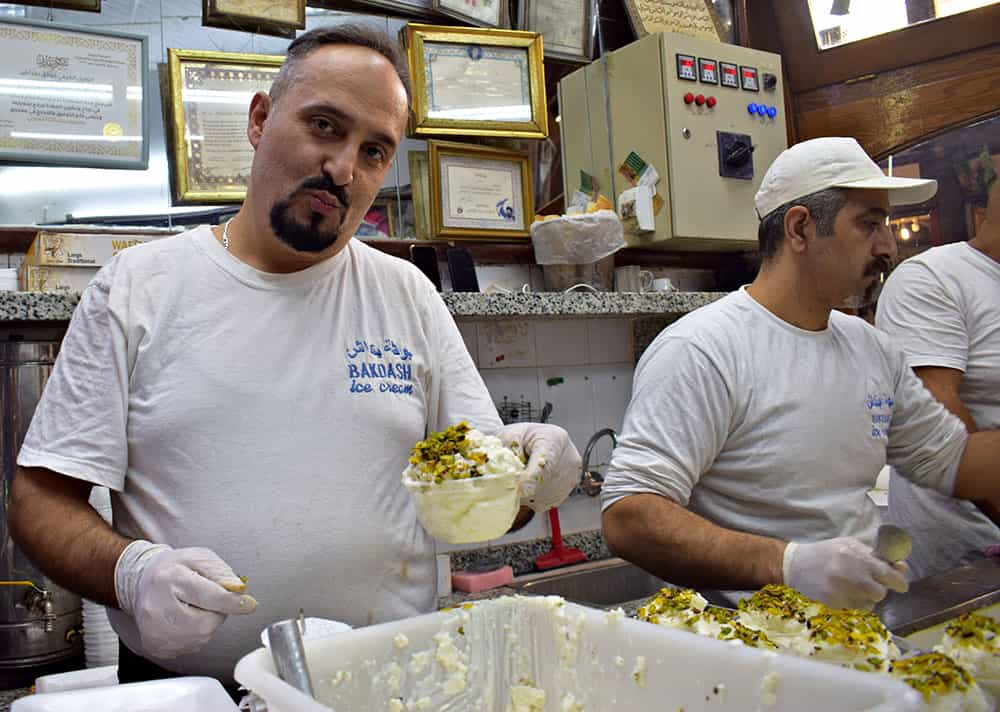


The storyteller of Damascus
Another one unique experience -not to miss- in the Syrian capital, is the tradition of the famous storyteller or “Hakawati”, as per the locals.
This tradition exists for over 20 years, and takes place in the café Al-Nawfara located inside the old town, just opposite the Great Mosque.
Here, the storyteller, while holding a sword in one hand and an old book in the other, entertains locals and visitors every day by reading poetic love stories from the Arabian book 1000+1 nights. Whenever he thinks the story is exciting or people are just fooling around or talking to each other, he forcefully beats the sword on the nearby table to get attention. It is actually very funny, because if you don’t expect his reaction, he freaks you out!
The show lasted about 40 minutes and even though we didn’t understand a word in Arabic, we had a real blast!
The Shia mosque, Sayyidah Ruqayyah
The stunning Shia mosque “Sayyidah Ruqayyah” was probably the most unique experience I lived in Damascus, although it comes from the depths of Iraq, and has nothing to do with the religious traditions of Syria.
With wonderful details of the modern Iranian architecture, the mosque is dedicated to the daughter of Al-Husayn ibn ‘Alī (third Imam of Shia Muslims and grandson of the Prophet Mohammed), who according to legend, died of tears at the age of 4, and her body was transferred to the impressive mausoleum built inside the mosque.
To enter the mosque as a woman, you must wear a long black abaya to cover the entire body, head and hair. The mosque has separate doors for women and men, while men are not obligated to wear anything over their clothes. Besides the mobile phone, which is allowed to carry, shoes and personal belongings, bags, etc., must be kept in lockers at the entrance.
The weird experience however, was not the -apparently beautiful- mosque, but a dramatic purification ritual, taking place at the exact time we visited it.
Entering the courtyard, a standing man was chanting, while the seated men and women around him were hitting their hearts with their hands. Getting further into the main area of the mosque, another man was chanting upright, while those sitting on the floor were crying and screaming. Countless packed candies, cookies, various kinds of food and girl dolls were placed on the carpet. I had already seen dolls for sale on the streets around the town, but didn’t pay much attention, as I thought it was just a toy. But then, a funeral or memorial ritual of a young girl came to mind, and I felt really sorry watching the family burst into tears.
Visiting the last hall of the mosque, I experienced one more strange rite: the pilgrims women in black were crying on the mausoleum, holding dolls and baby clothes. That was the moment I realized that something else was probably going on and certainly not a funeral. Indeed, our guide explained that all those worshipers were crying for the little one buried in there, and not for a recent death and the whole weird experience was a purge ceremony, very usual and normal in their religion.
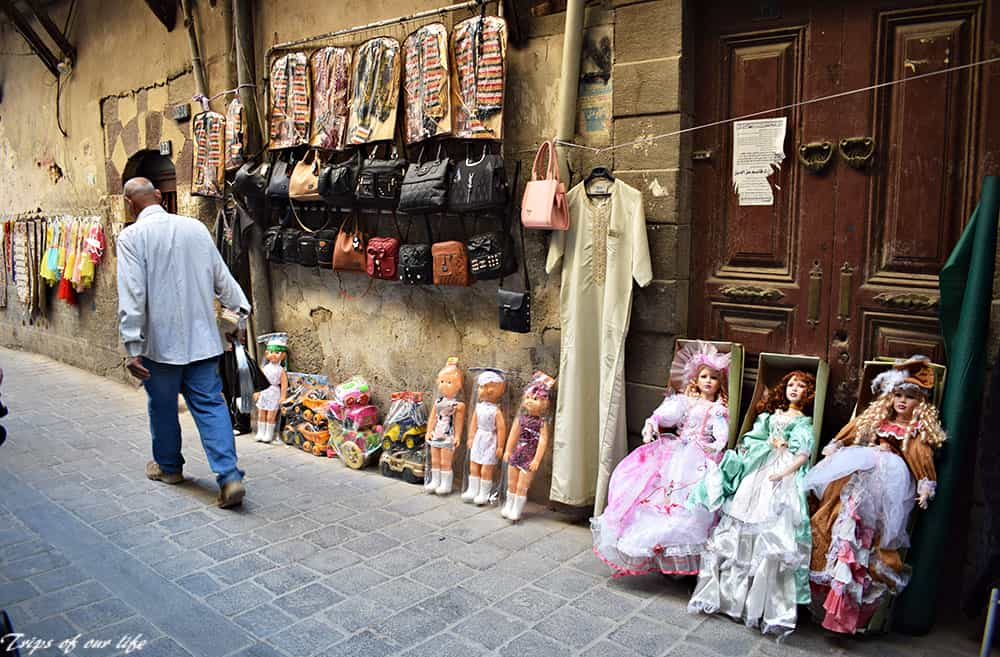
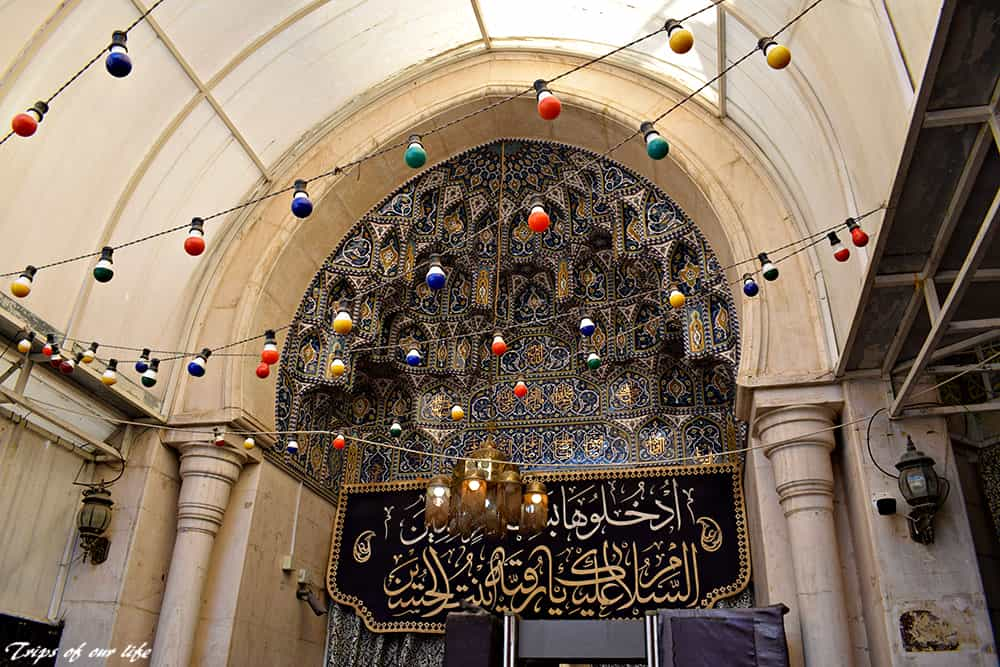
the entrance
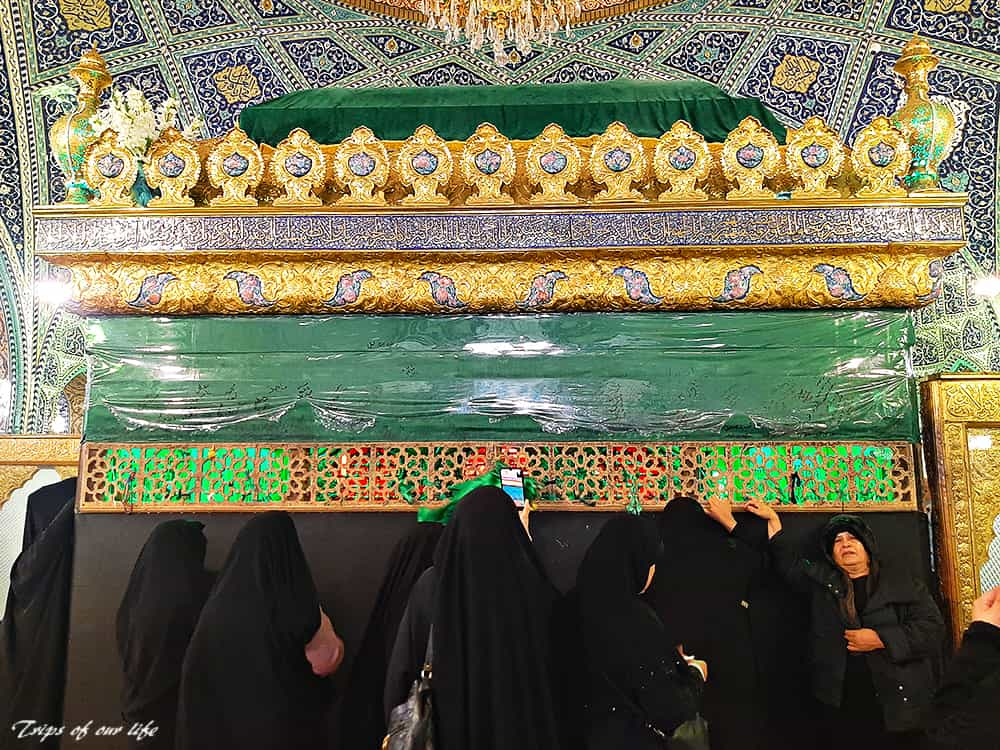
the mausoleum
Syrian food
Food itself is a very special experience. Syrian cuisine is similar to the Lebanese one, with amazing flavors and a wide variety of meat and legume dishes. We tried as much as we could: at restaurants, street food markets, even take away sandwiches and everything was super tasty. Sawarma, falafel, kebab, kibbeh, fattoush and hummus are some of the countless famous dishes of the country and the Middle East in general.
The Syrian desserts are extremely delicious, as well! My favorite was the künefe with kadaif (they call it kunafa), one of the best I have ever tasted, and so much better that the dry one of Lebanon, which is made exclusively of semolina. Plus the famous Bakdash ice cream of the souq!
Although Syria is a Muslim country, alcohol is allowed everywhere, and their national arak spirit, similar to our Greek ouzo, is a must-have at all meals! Their nightlife is very similar to the western style, going out to both modern and traditional bars.
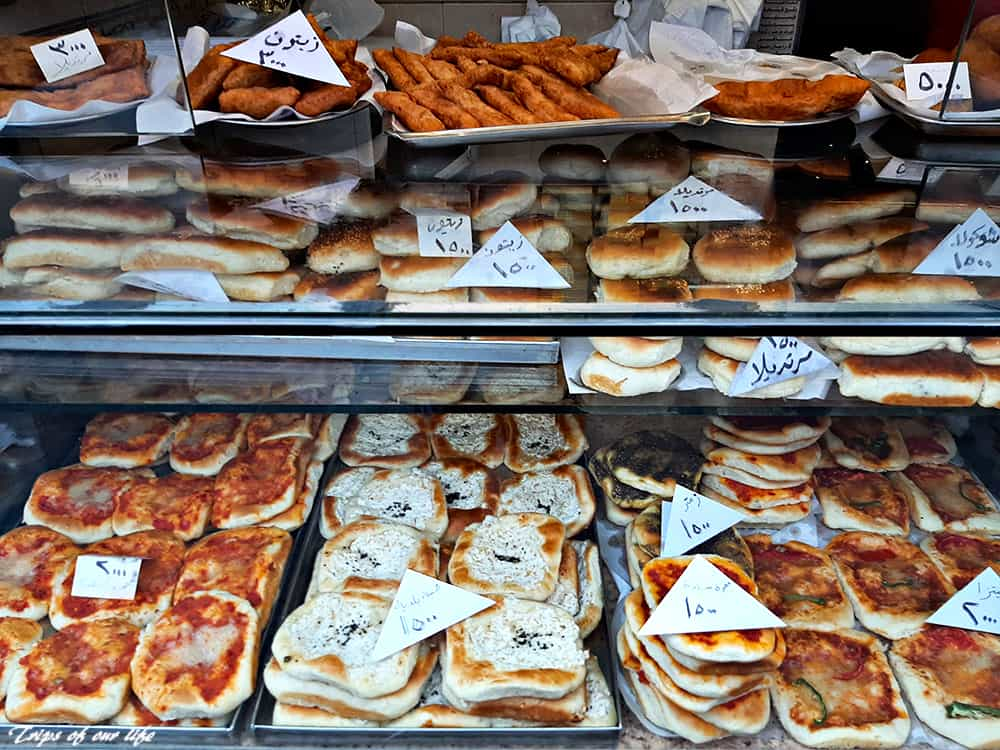
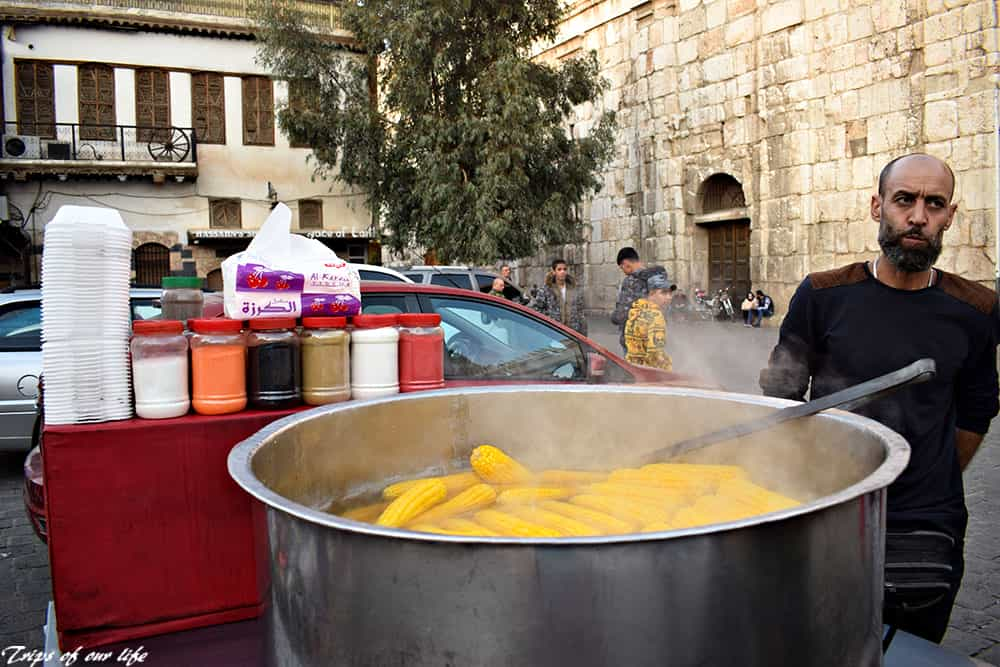
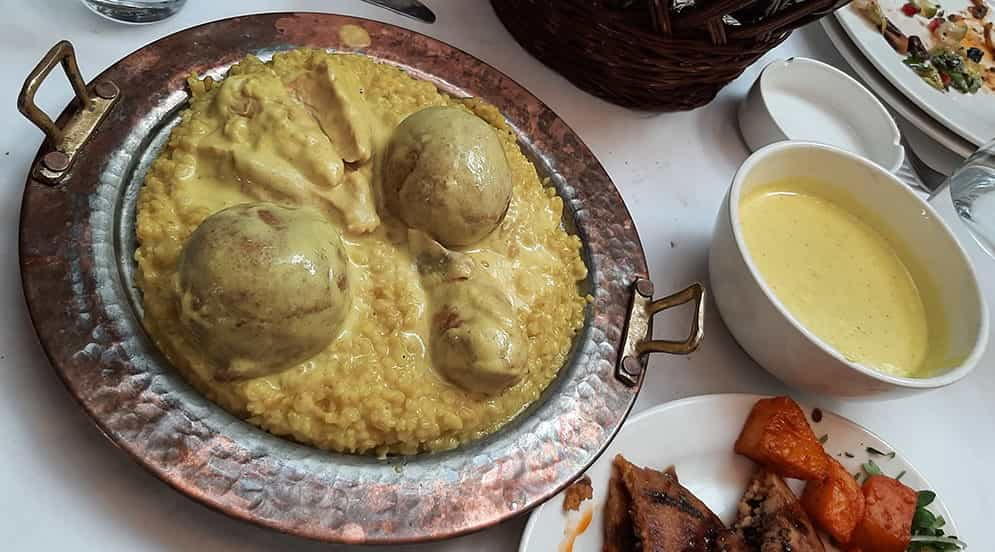
Highlights of Damascus:
- The Church of St. Ananias
- St. Paul’s Church
- Straight street
- The National Museum
- Umayyad Mosque
- café Al-Nawfara
- Shia mosque Sayyidah Ruqayya
- Al Hamidiye souq
- El-Azem Palace
- Maktab Anbar Palace
- Al Hijaz railway station
- Nairabein Park view point
